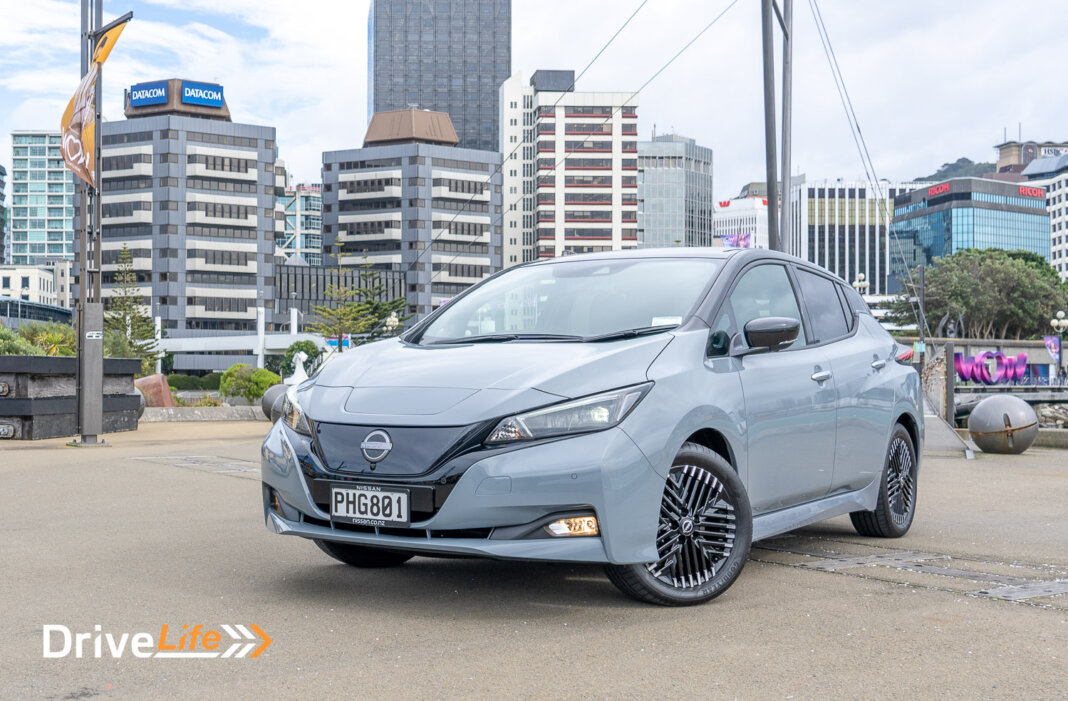With the onslaught of the Clean Car Programme and its rebate scheme for imported (and New Zealand-new) EVs, it seems every man and his dog now owns a Nissan Leaf. An exaggeration, sure, but there’s no denying that they seem to be popping up all over the place.
A vast majority of those Nissan Leaf imports are the second generation. We reviewed a used second-gen Nissan Leaf back in 2017, and in 2020 I imported one and drove it from Auckland to Wellington to show how long (and how many charges) it would take.
But what about the third-generation Leaf? While these seem more prolific than before the Clean Car Programme, since there are so many more options in a five-door small hatchback EV these days, can the latest Nissan Leaf keep up with the pack? Can it compete with models like the Peugeot 208 EV, or the cheaper MG ZS EV?
We took the base model 2022 Nissan Leaf 40kW for a week to test it out as a daily commuter.
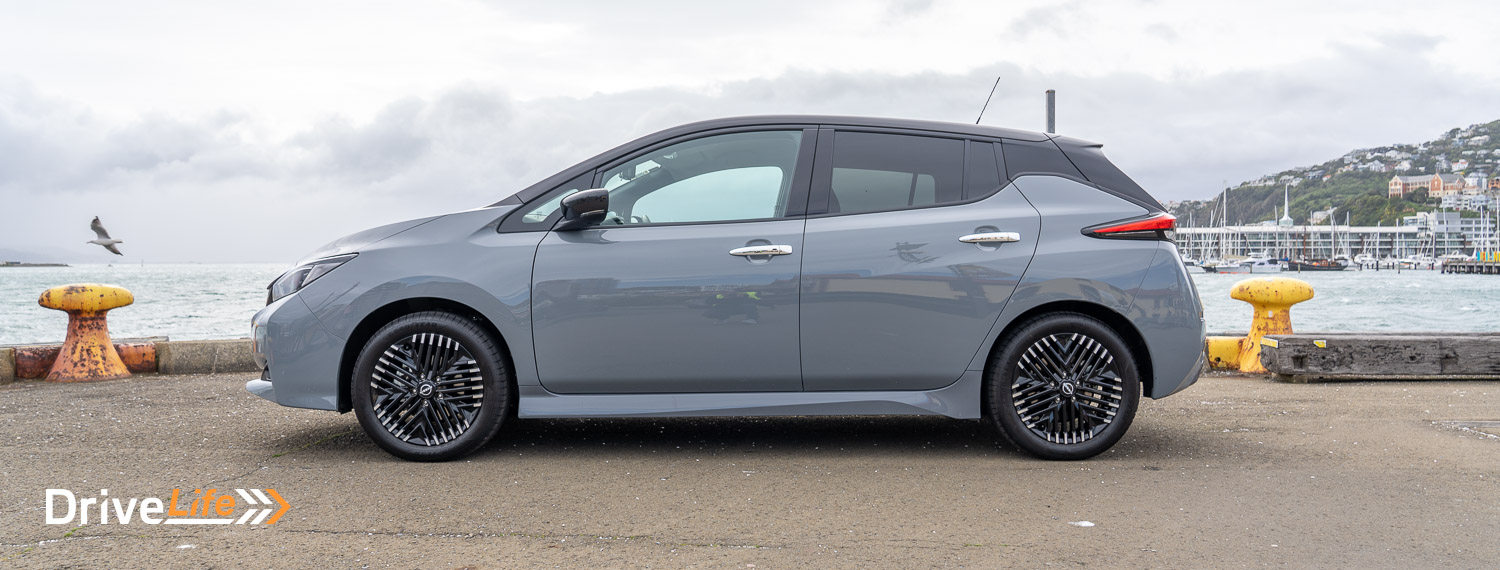
What We Like and Dislike About The 2022 Nissan Leaf 40kW
| What we like | What we don’t like |
| Feeling of spaciousness inside Performance Energy economy Lack of wind, tyre and road noise Lots of unobtrusive safety systems Generally plenty of room inside e-Pedal feature Huge glovebox | That colour with this design Speaker arrangement in boot Hump in rear passenger area Brake and steering feel Price |
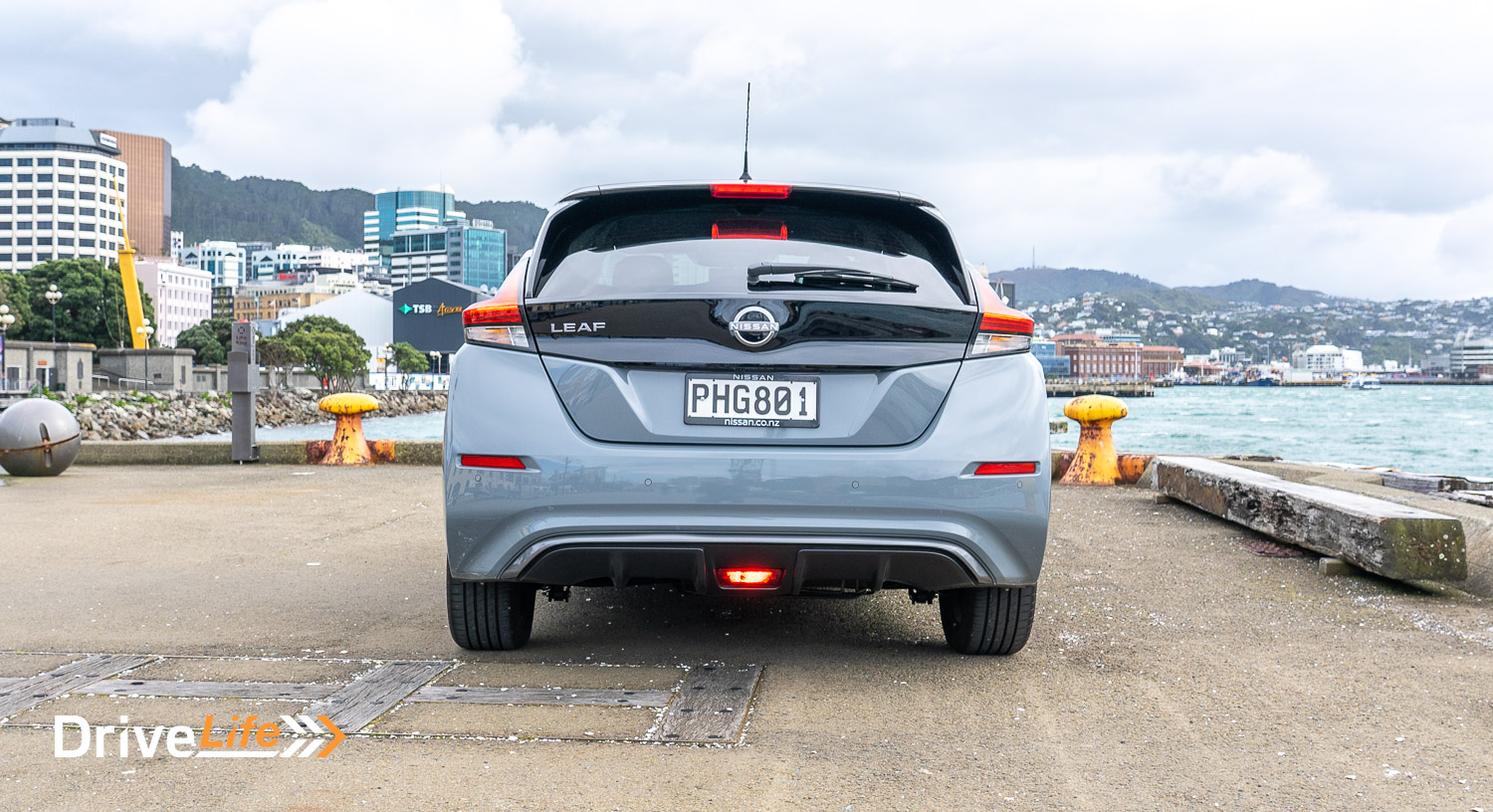
What’s In The 2022 Nissan Leaf Range?
New Zealand sees two models of the Nissan Leaf, separated only by battery size.
- Leaf 40kW: $63,990 (tested)
- Leaf e+: $72,990
The 40kW model has a WLTP range of 270km provided by a 110kW electric motor that pumps out 320Nm of torque. Upgrading to the Leaf E+ gets you a 59kWh battery for an “indicated driving range” of 385Km. Moving to the bigger battery model will up power output to 160kW of power, and 340Nm of torque. That extra power will get the Leaf e+ to 100Km/h in 6.9 seconds, compared to 7.9 for the 40kW model.
The Nissan Leaf is front-wheel drive.
2022 Nissan Leaf Standard Equipment Highlights
Powertrain & Charging equipment
- e-Pedal
- Shift-by-wire drive selector
- Intelligent Trace Control
- Intelligent Ride Control
- Charge ports (AC Type-2 & DC CHAdeMO)
- MODE-3 EVSE cable (Type-2) supplied
Exterior
- LED signature daytime running lights
- 17” alloys wheels with temporary wheel
- Privacy glass
- Auto-folding heated door mirrors with integrated LED turn indicators
- Front and rear fog lights
- Dusk-sensing LED headlights with auto levelling system
- High Beam Assist
- Metallic blue rear bumper finisher
- Rear spoiler
- Chrome door handles
Comfort/Convenience
- Friendly Lighting function
- Climate control with on-board timer
- Digital Speedometer
- Auto-dimming rearview mirror
- Rain-sensing front wipers
- Intelligent Cruise Control
- Intelligent Key with push button start
- On-board charge timer
- 7” Advanced Drive-Assist Display
Seating
- Tilt-adjustable leather-accented steering wheel with heating function
- Black leather-accented seat trim with Ultrasuede inserts
- 6-way manual-adjustable driver seat
- 4-way manual-adjustable front passenger seat
- Heated seats (front and outboard rear)
- 60:40 split rear seats
Connectivity
- Apple CarPlay and Android Auto smartphone mirroring
- Voice recognition
- iPod-compatible USB port
- 12V power outlet
- 8” colour touch-screen display
- Satellite navigation
- Bluetooth (phone/audio)
- 7 speaker Bose Energy Efficient premium audio
Safety
- Child restraint anchorage (ISOFIX outboard rear seat & tether. Centre seat tether only)
- Hill Start Assist
- Intelligent Around View Monitor with Moving Object Detection
- Parking sensors (front & rear)
- Intelligent Driver Alertness
- Intelligent Forward Collision Warning
- Intelligent Emergency Braking with pedestrian detection
- Intelligent Lane Intervention
- Blind Spot Warning
- Rear Cross Traffic Alert
- Rearview camera with predictive path technology
- Tyre Pressure Monitor System
- Lane Departure Warning
- Vehicle Sound for Pedestrian (low-speed)
- Traffic Sign Recognition
You can purchase your 2022 Nissan Leaf in one of six base colours, and also a mix of five colours with a black roof and mirror caps:
- Artic White
- Sangria Red
- Gun Metallic
- Pearl Black
- Dark Blue Pearl
- Flame Red
- Ivory Pearl with black roof and mirrors
- Silver Metallic with black roof and mirrors
- Grey Pearl with black roof and mirrors
- Blue Pearl with black roof and mirrors
- Magnetic Red with black roof and mirrors
For a full list of specs and options available for the 2022 Nissan Leaf 40kW head on over to the Nissan New Zealand website.
How Does The 2022 Nissan Leaf 40kW Compare To Its Competition?
All prices below exclude the refund or additional cost of the New Zealand Clean Car Programme.
| Make/ Model | Battery Capacity kW-hr | Power/Torque kW/Nm | 0-100km/ seconds | Range (WLTP) | BootSpace, litres | Price (excl CCP) |
| Tesla Model 3 RWD | 54 | 190/450 | 6.1 | 491 | 491 | $74,900 |
| Hyundai Kona EV | 39.2 | 100/395 | <10 | 305 | 332 | $69,990 |
| Hyundai Ioniq | 38.3 | 100/395 | 9.7 | 311 | 350 | $65,990 |
| Nissan Leaf 40kW | 40 | 110/320 | 7.9 | 270 | 405 | $63,990 |
| Peugeot 208 EV | 50 | 100/260 | 8.3 | 348 | 311 | $61,990 |
| Mini Cooper EV | 32.6 | 135/270 | 7.3 | 233 | 211 | $60,400 |
| BYD Atto3 Standard | 50 | 150/310 | 7.3 | 345 | 440 | $55,490 |
| MG ZS EV Essence | 50 | 1300/280 | 8.2 | 320 | 359 | $53,490 |
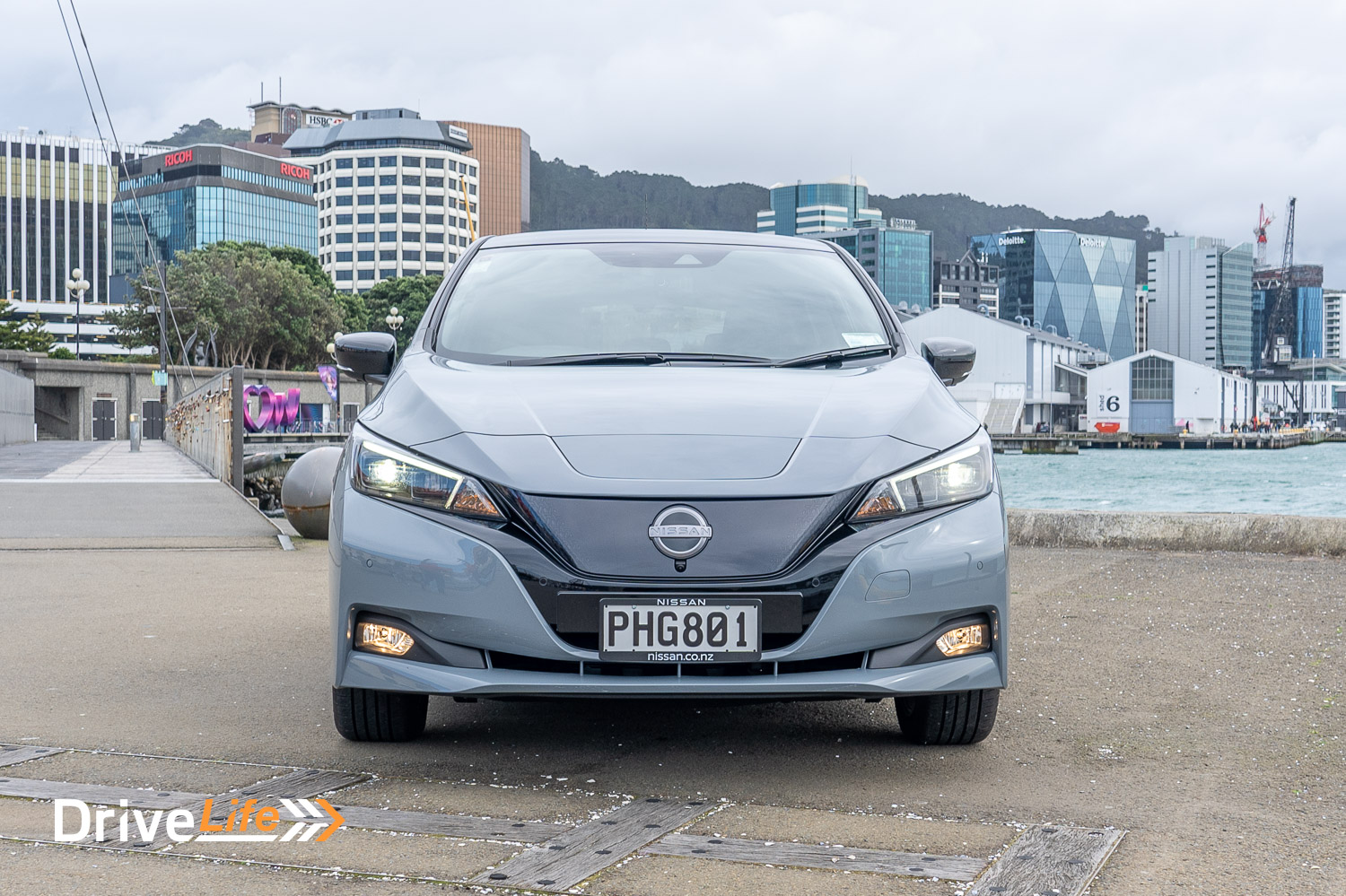
First Impressions Of The 2022 Nissan Leaf 40kW
During the day of my pickup of our test car, I saw two latest-model Leafs, one in metallic red and one in metallic blue. While many are not fans of the first and second gen Leafs, the third-gen actually looks quite good – almost space-age. When I picked up our test car, I saw it was finished in Grey Pearl with a black roof. For me, that colour simply doesn’t go with this design of car, especially when you add on those wheels. I can see that Nissan was going for a space-age wheel design and applaud them for that, but I don’t think they’ve pulled it off.
For me, the end result of the first impression is that it can be a good-looking car, but not in what could be referred to as battleship grey. Your mileage may vary on this one, and if you like that grey on the Leaf, go for it.
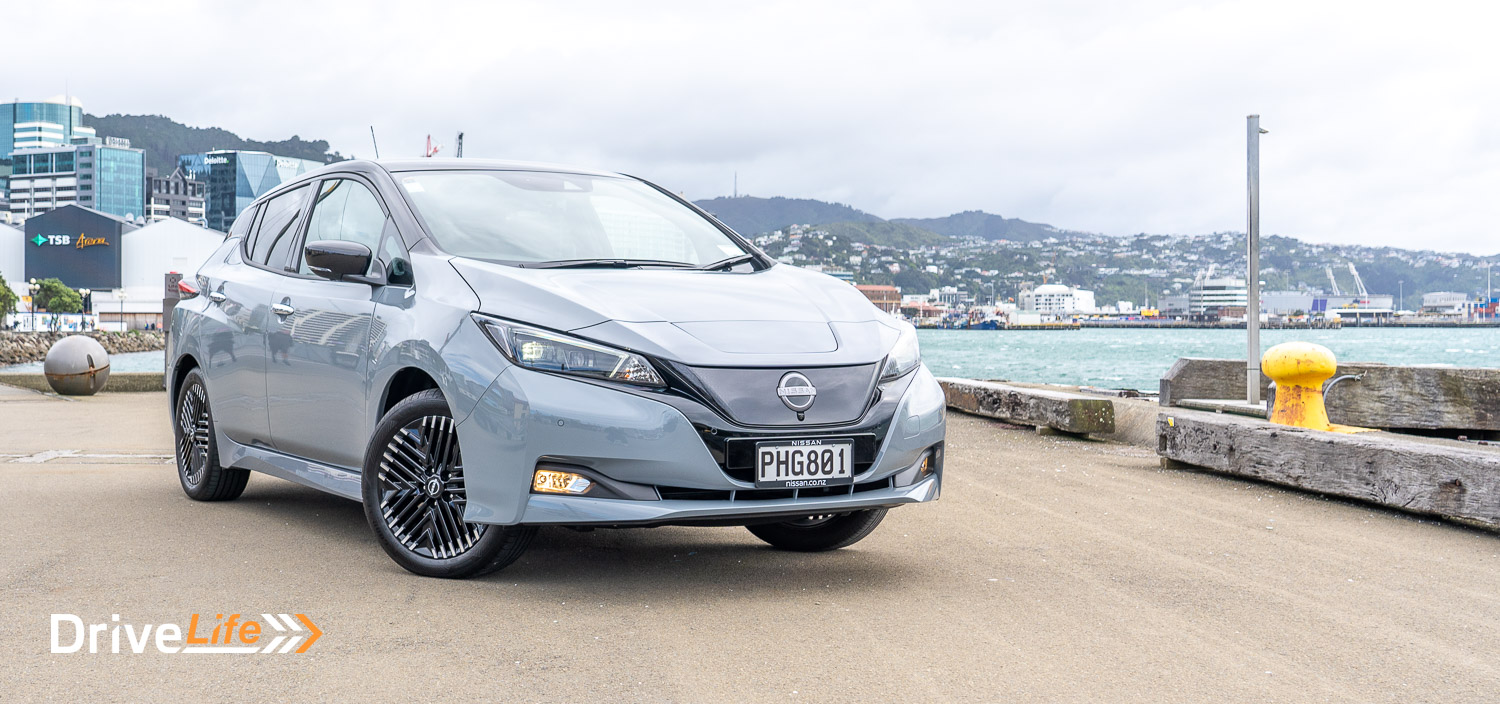
What’s The Interior Like In The 2022 Nissan Leaf 40kW?
There are a lot of similarities between the second and third-gen interiors. I was surprised to see that the latest model still has a pedal park-brake. The infotainment system works pretty much the same, although the clarity has taken a huge leap in quality.
Standard equipment includes a 360-degree camera. While these are well worth having, the resolution of the camera is pretty low, meaning you need to focus on the screen a little to actually see it properly. My own Leaf has this option, and it includes an upgrade to the sound system to a Bose unit. That’s fine, but in my car Nissan has placed the amp right in the middle of the floor in the boot. It’s a terrible place for the Bose as it uses up essential boot space. The latest gen Leaf does exactly the same thing; right smack in the middle of the floor is a big amp. It makes you wonder why Nissan didn’t move it to the side.
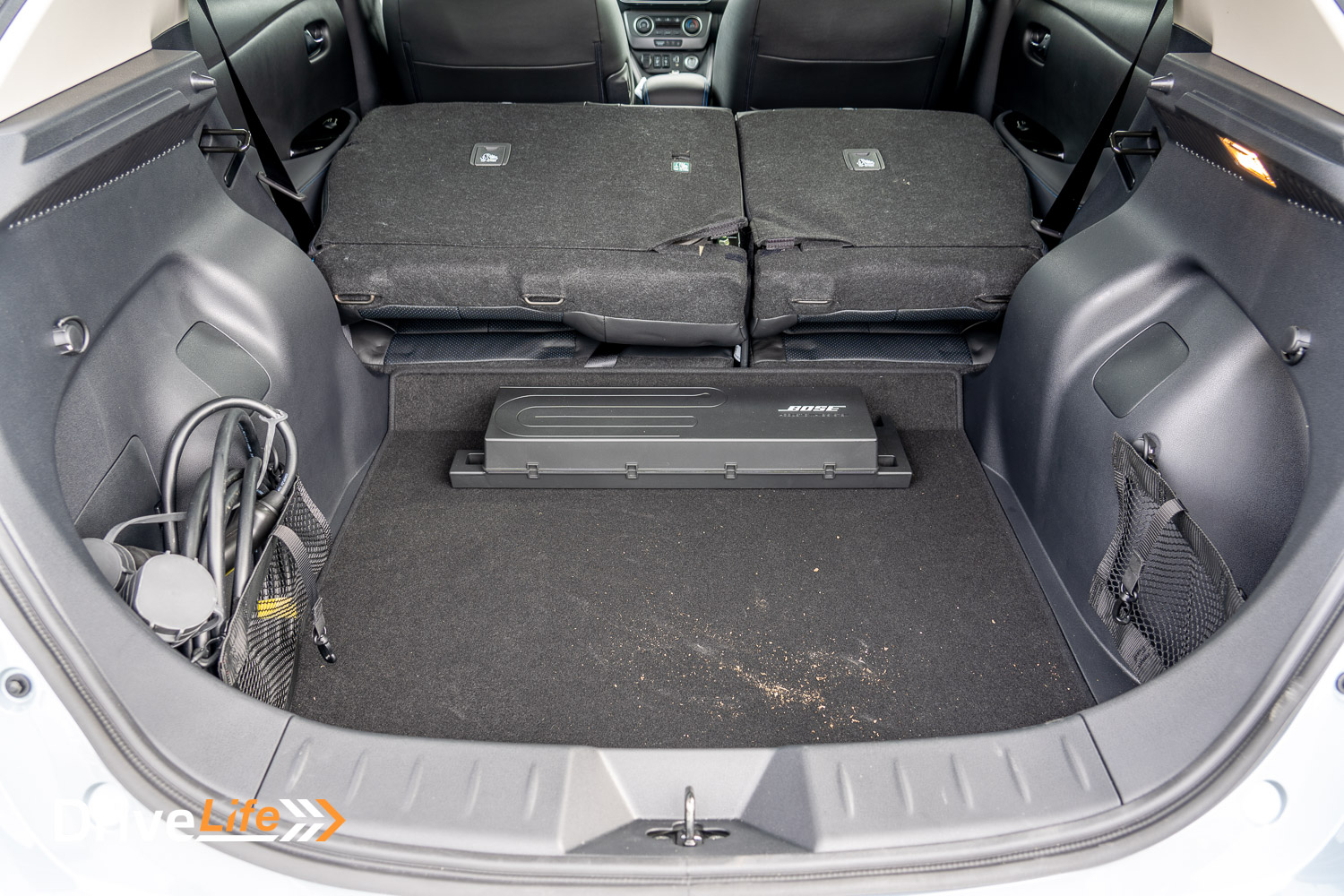
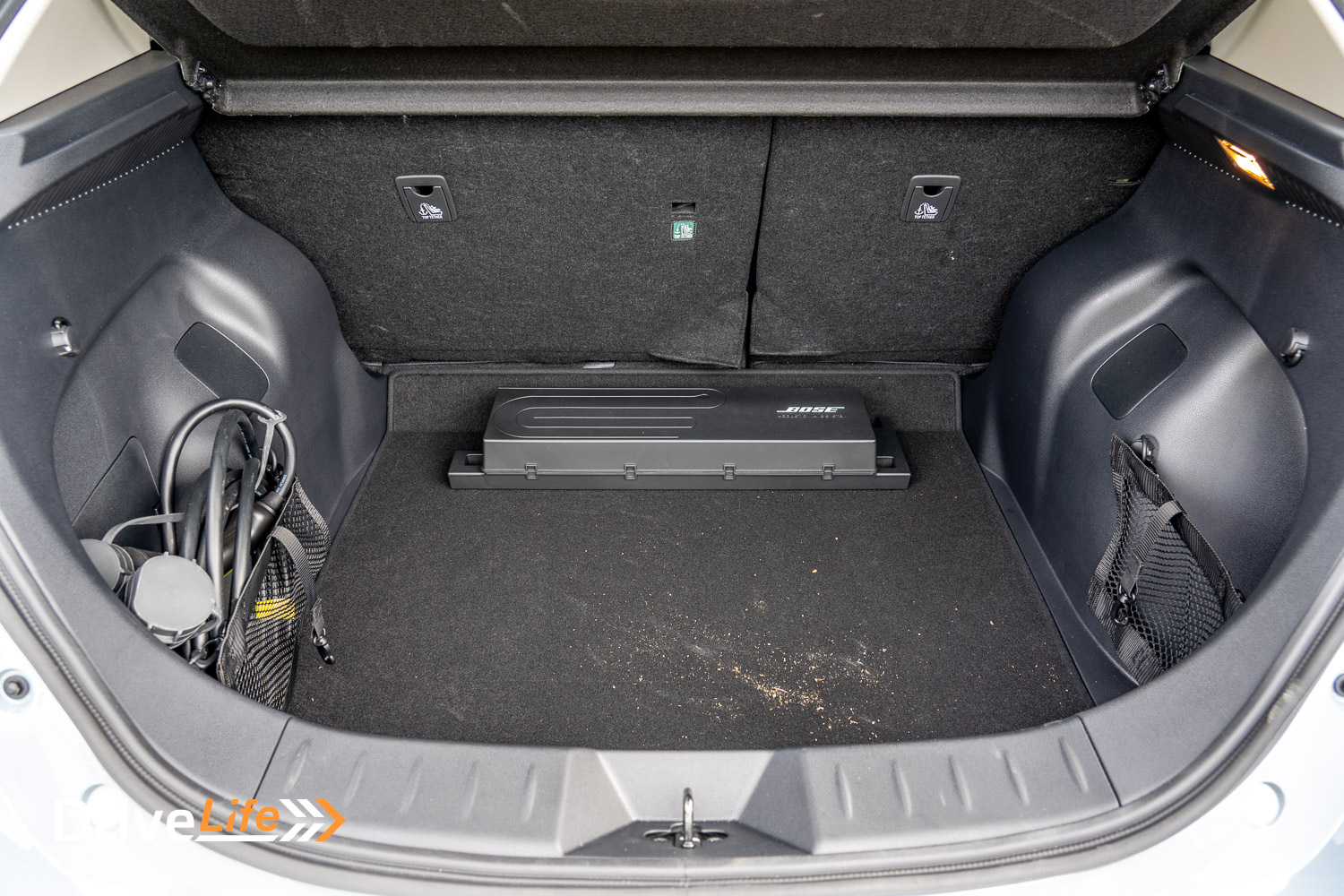
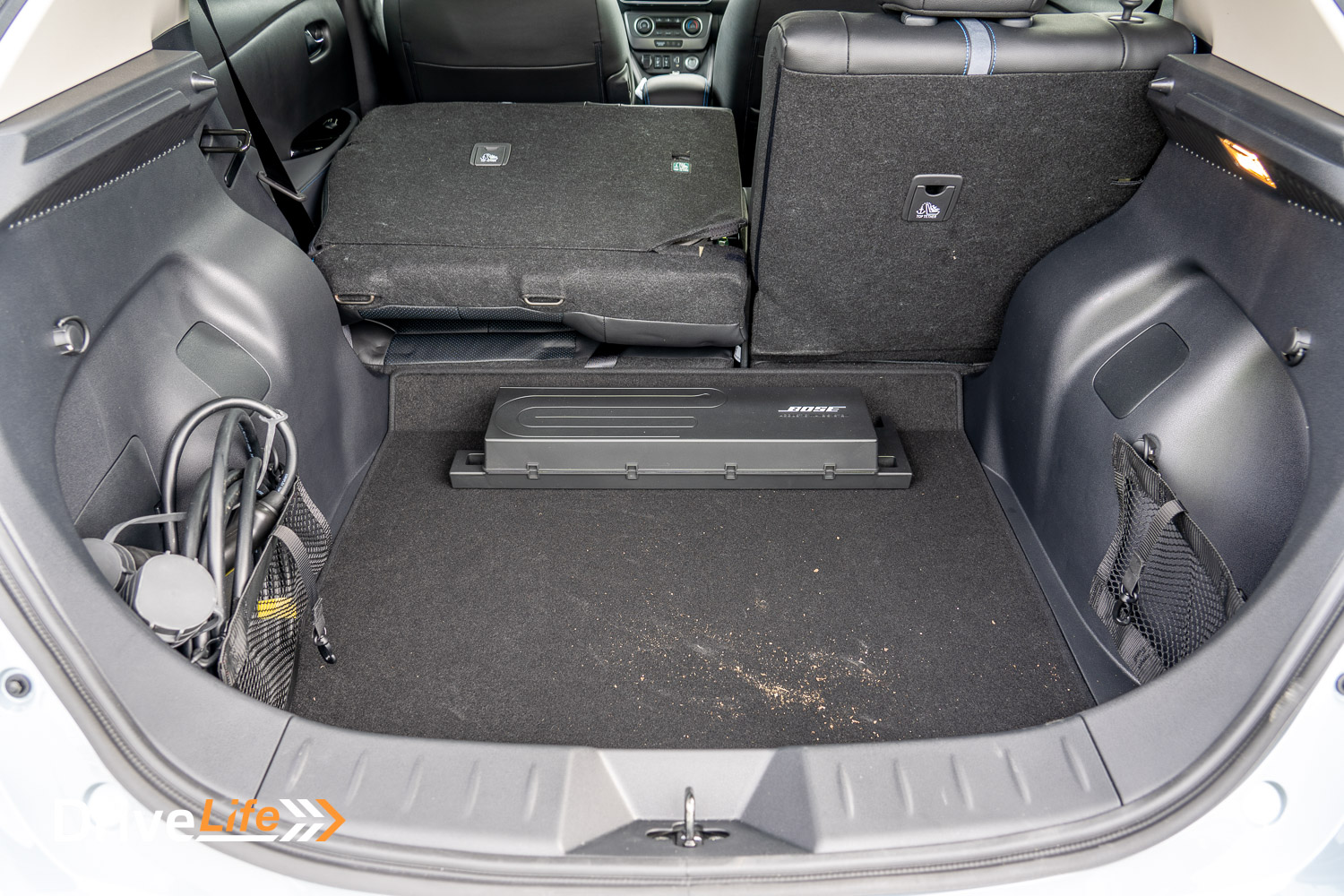
Back up in front, both front seats have two-stage heating, as does the rear seat. The driver gets a heated steering wheel but it’s not two or three stage, it’s simply on or off. It’s still very much appreciated when we hit a cold snap during our time with the Leaf. The steering wheel is flat-bottomed which is a sporty touch, but not quite sure if that’s in keeping with the Nissan Leaf as a commuter.
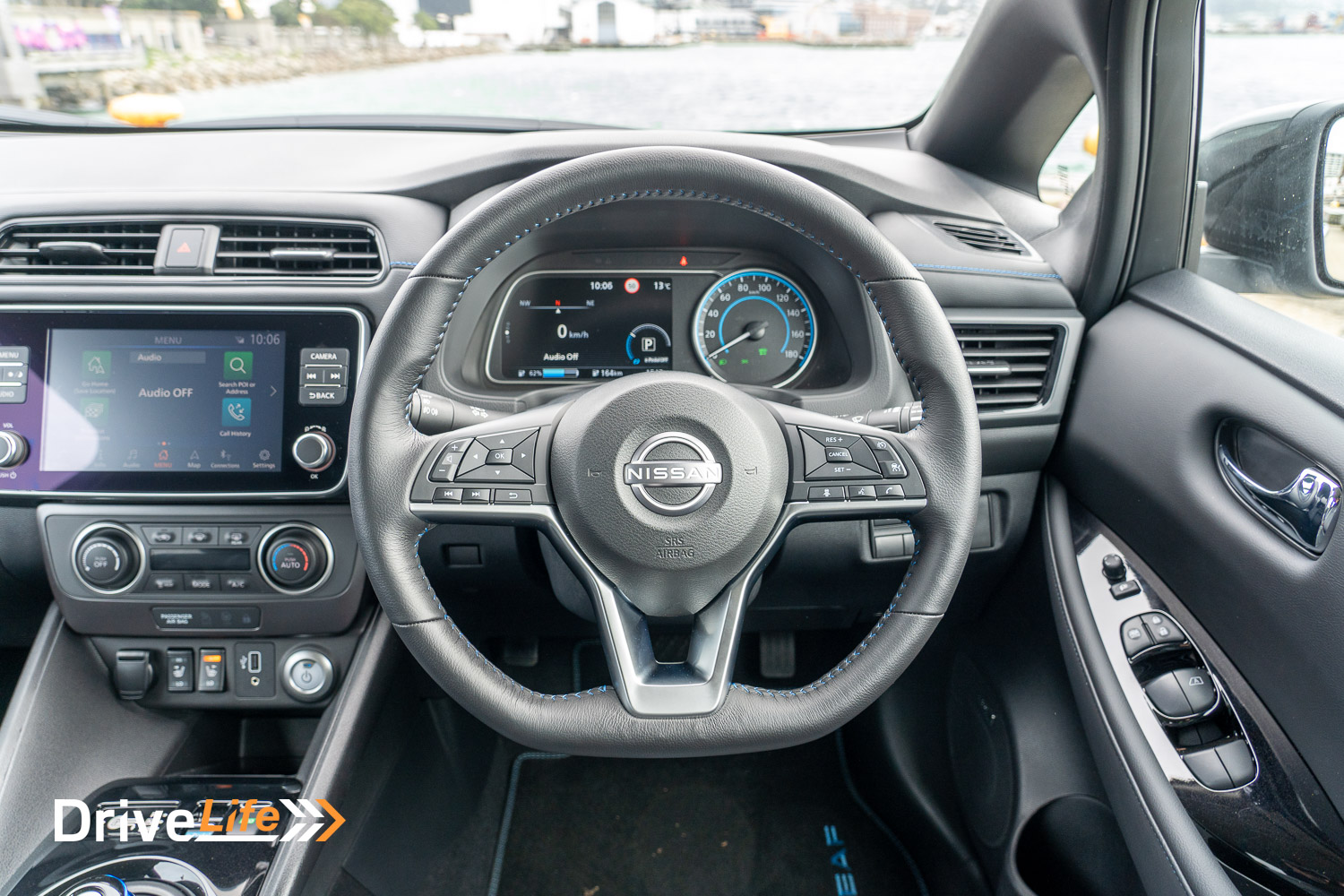
At the front of the centre console is what I thought was a Qi wireless charging pad for my phone, but it’s not – it’s simply a place to dump your phone. I do like how Nissan has tipped this forward to angle the screen away from the driver’s vision, reducing the temptation to look at the screen. Above the cellphone holder is a single USB-A port, a 12-volt socket and that essential teenage feature, an AUX port.
While the centre cubby isn’t large – it’ll take a couple of wallets at best – the glovebox is bloody enormous, one of the biggest I’ve ever seen in a car. You can’t see the depth of it in this photo, but it goes a long way forward.
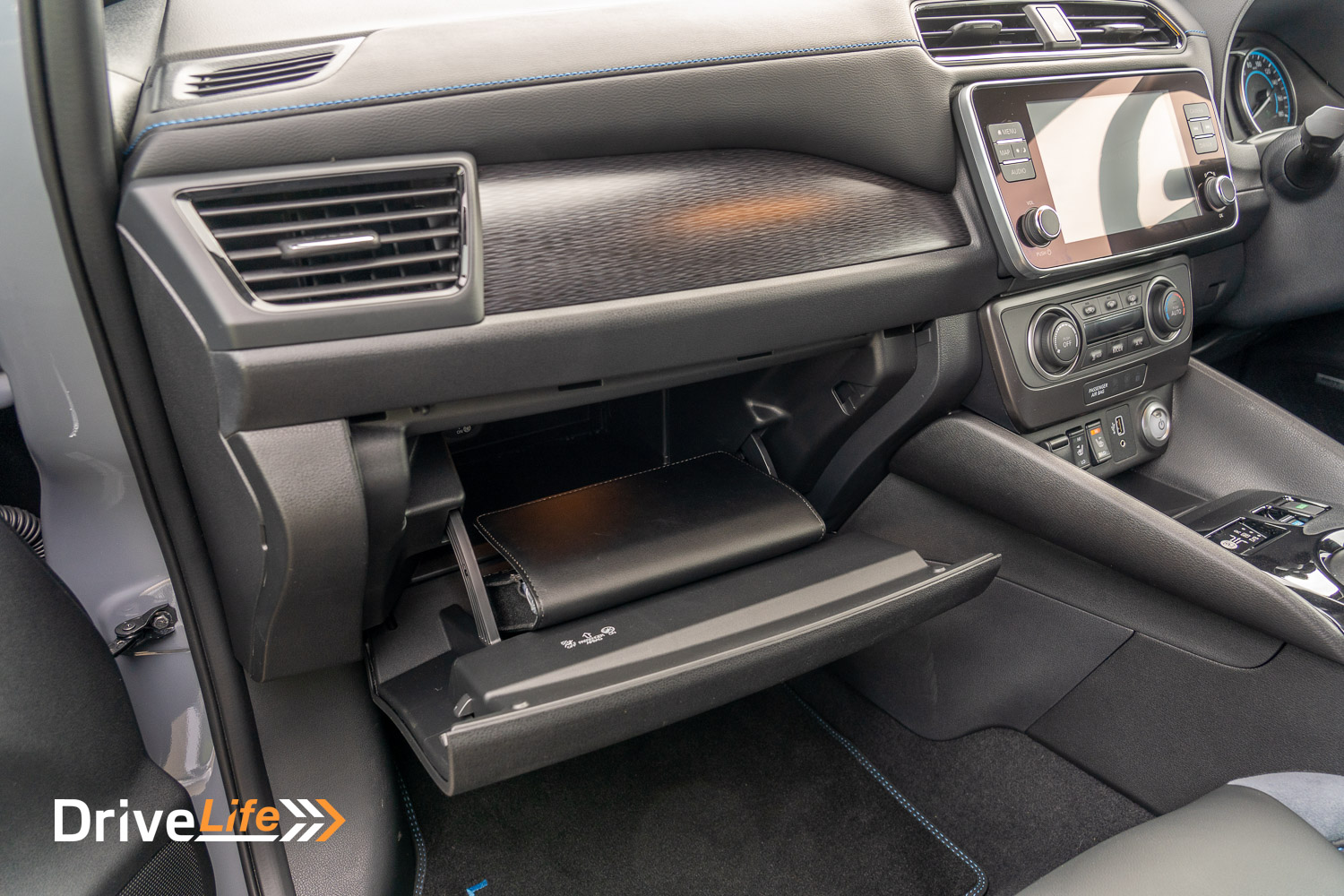
The seats are a mix of leather and Ultrasuede (a.k.a alcantara). Those seats have some stylish blue stitching around them, and this is also on the dash, steering wheel and mats. It really adds a bit of class to the Leaf interior. The front seats have a strip of Ultrasuede on the edges; I’m not sure about the longevity of this idea, as your pants rub against it every time you get in or out of the car. Even at $63,990, there’s no electric adjustment for the seats and no lumbar adjustment either.
The interior has splashes of piano black, with black seating and a beige headliner. It’s all very well made, as well as light and airy and the padded dash top adds to the feeling of being a little bit executive. There’s plenty of headroom for all, and rear-seat passengers have plenty of legroom. Well, for the passengers at the sides, anyway. There’s a huge hump in the rear floor of the Leaf, and it spreads outwards at the rear like it’s going to a differential (it’s not). It sucks up a lot of leg space for your middle-seat passenger. The hump is used to carry the battery cables, according to Nissan.
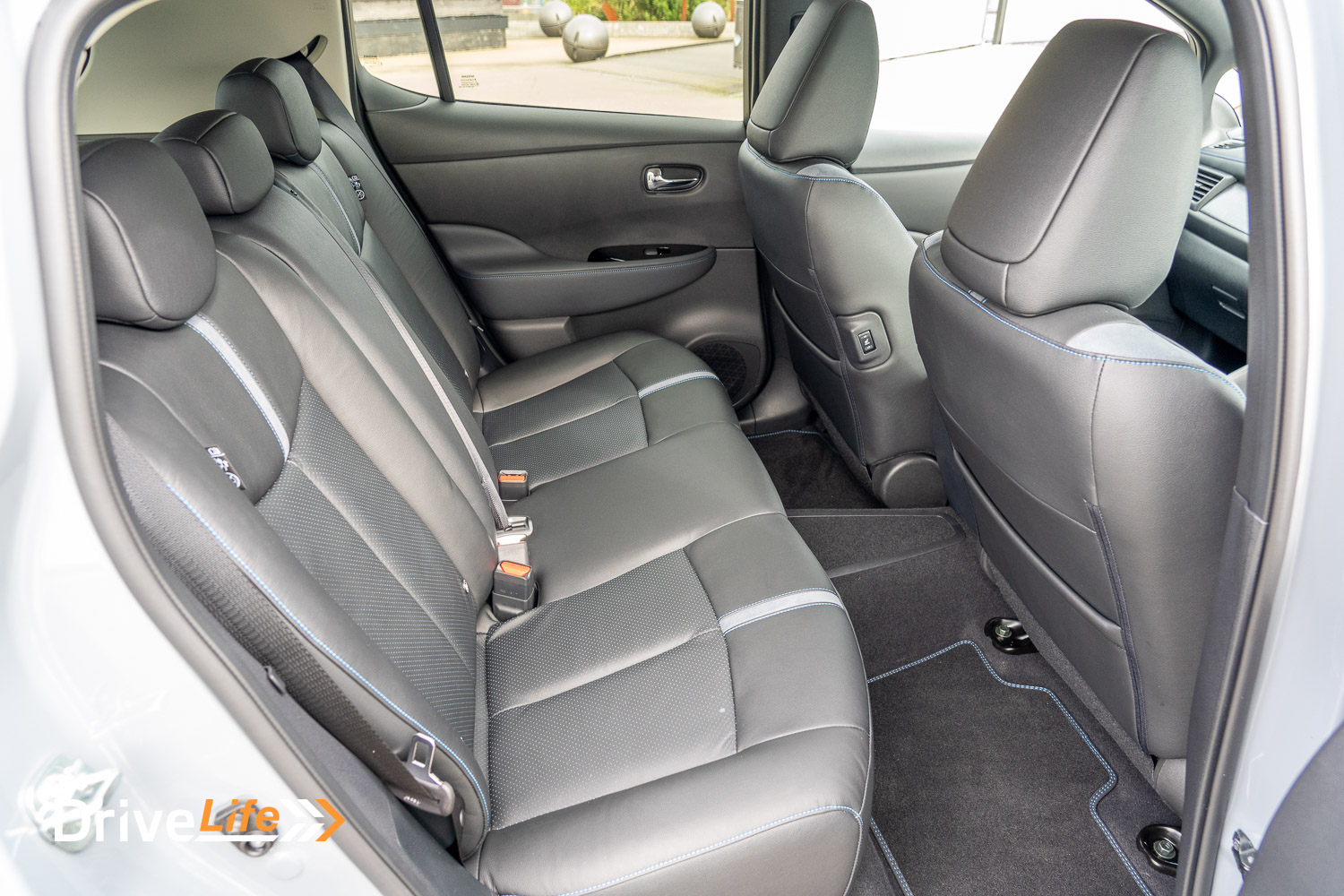
At 405 litres, the 2022 Nissan Leaf has a very generous boot, except for that Bose amp we already mentioned, Folding the rear seats down doesn’t mean a flat floor, but it does extend the space out to 1,176 litres, more than some small SUVs I can think of.
What’s The 2022 Nissan Leaf 40kW Like To Drive?
Like the interior, driving the 2022 Nissan Leaf is a similar experience to the second generation model, but with a bigger battery. It’s been said that it’s hard to beat a Leaf to 50Km/h in a drag race, and that still stands (almost) true. It’s an extremely peppy city runabout and will surprise many at the lights. Wheelspin is managed far better than in the previous model, and even in the wet on full-throttle acceleration, wheelspin is well controlled with only a second or so of low traction and then the car takes off.
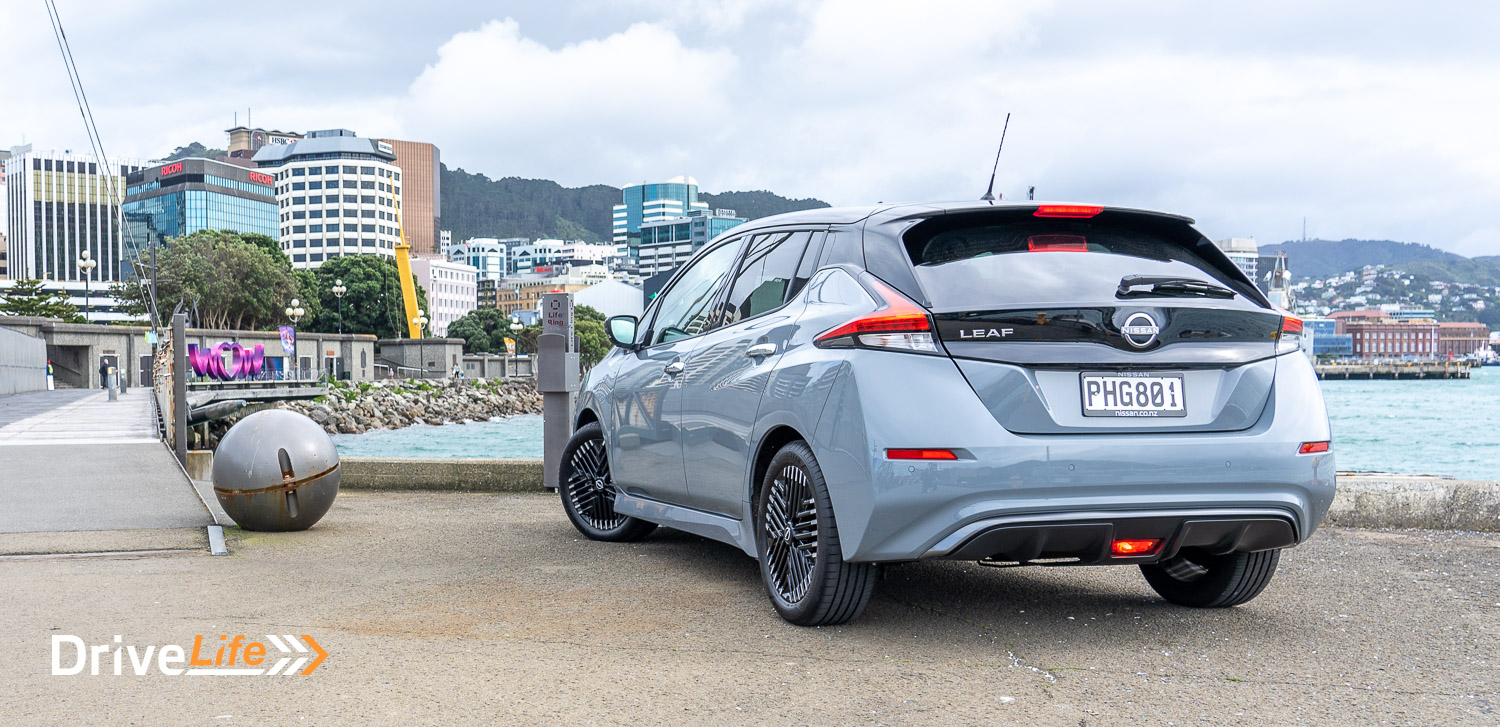
Turning on Eco mode will dull performance as well as make the accelerator pedal heavier, but with the torque and weight of the car, it copes with Eco mode without issue. The Leaf is one of the few cars I can recall that actually remembers its drive mode; stick it in Eco mode and when you come back to the car later, it will still be in Eco mode. Nice.
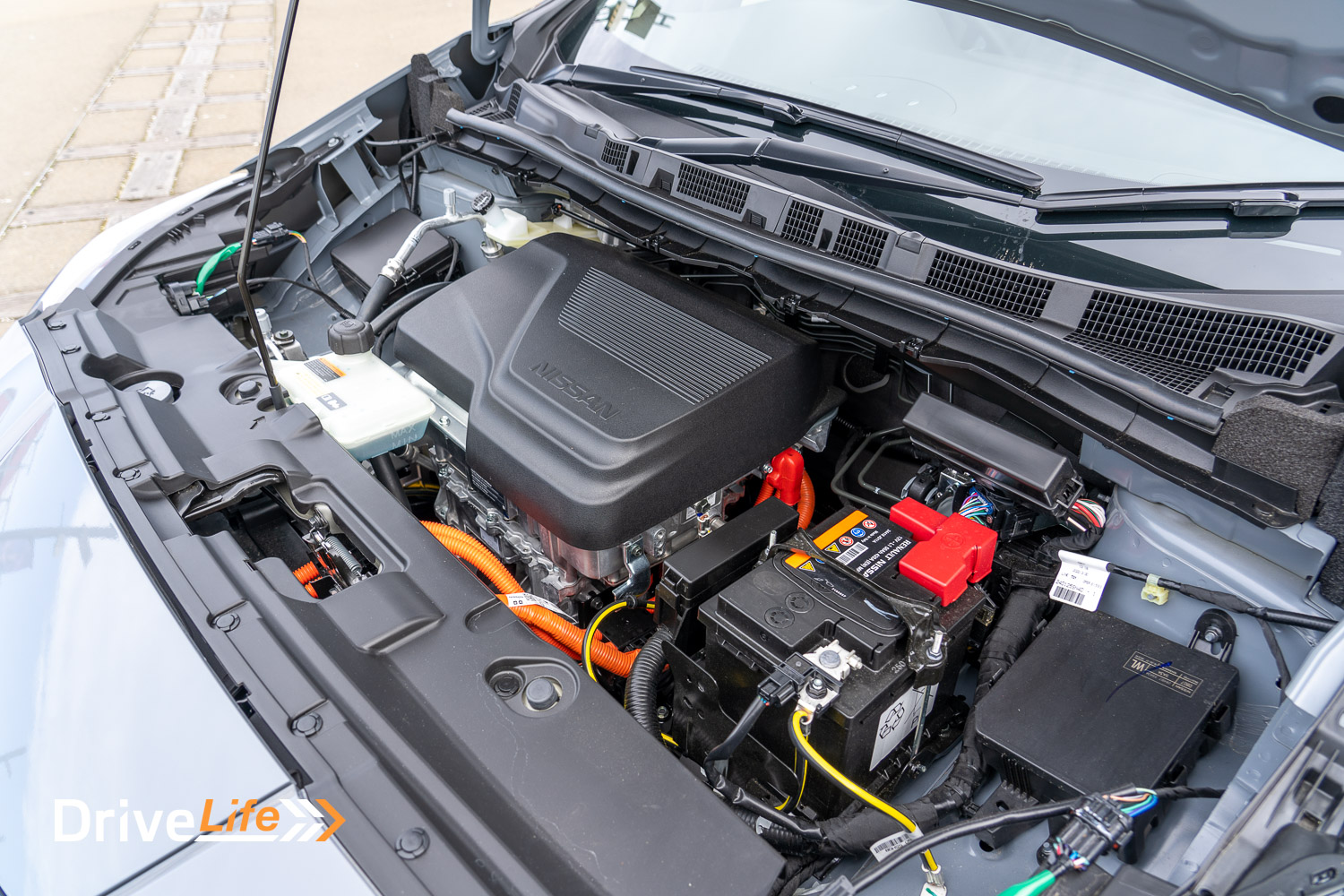
The EV-driving side of things is almost the same as the second-gen. You get the funky (but simple to use) gear selector, and once selecting D for Drive, you can pull the selector down to D again to select B mode. This applies more brake regeneration (regen) to the car, giving you more charge going down hills, or simply slowing down for a red light etc. Pulling the selector back down again will switch the car back to Drive. It’s all very simple, and since the Leaf still doesn’t have steering wheel paddles to alter regen, this is the only way to do it.
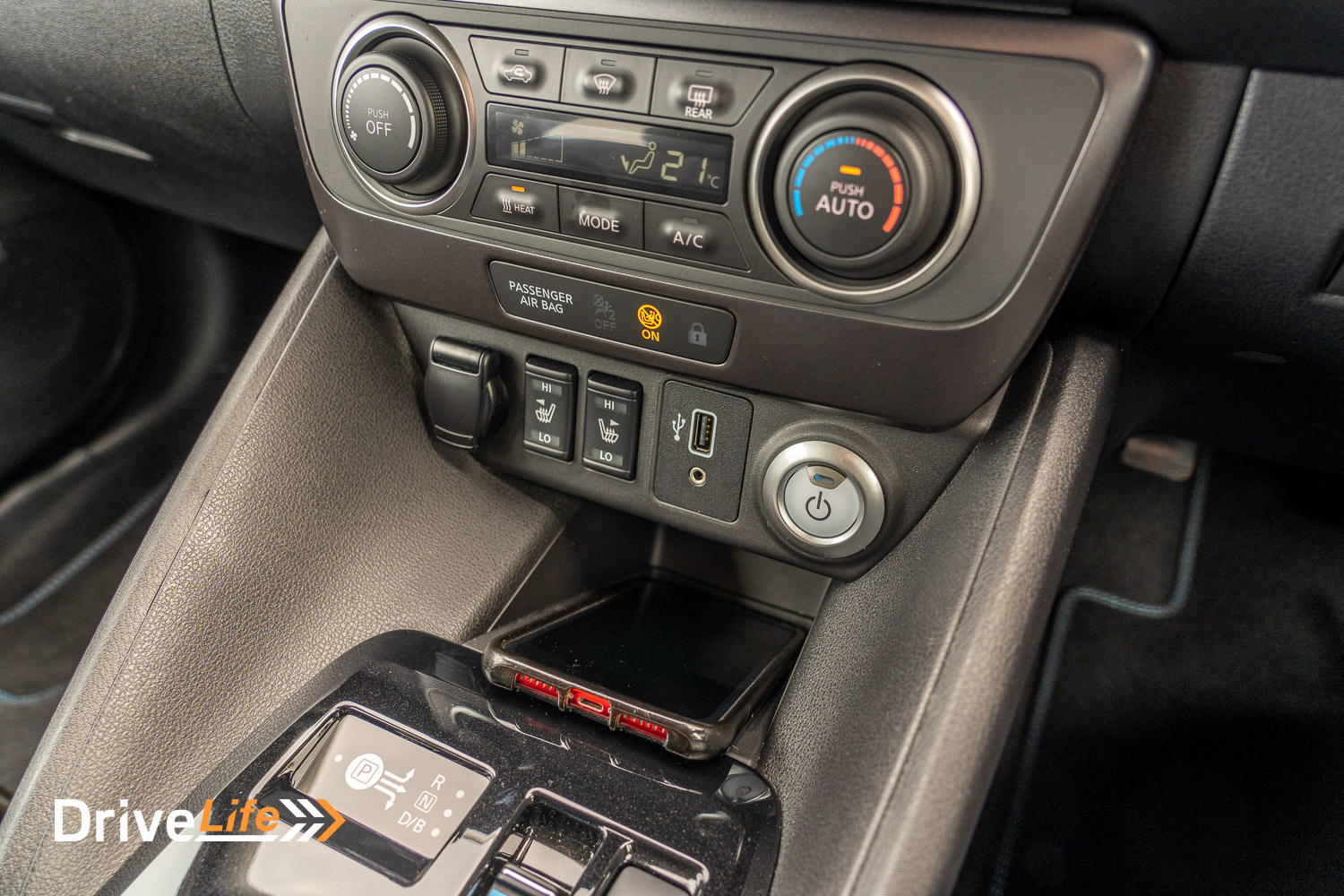
New for the latest Leaf is the ‘e-Pedal’. This is a switch on the centre console that will essentially enable one-pedal driving. You can still use the brake pedal if needed but it’s a rare occasion. It does take some getting used to one-pedal driving as you need to keep your foot on the accelerator pedal all the time to keep moving. A shame that while the Leaf remembers that you had Eco mode turned on when you get back in the car, you have to turn on the e-Pedal every time you want to use it after returning to the car.
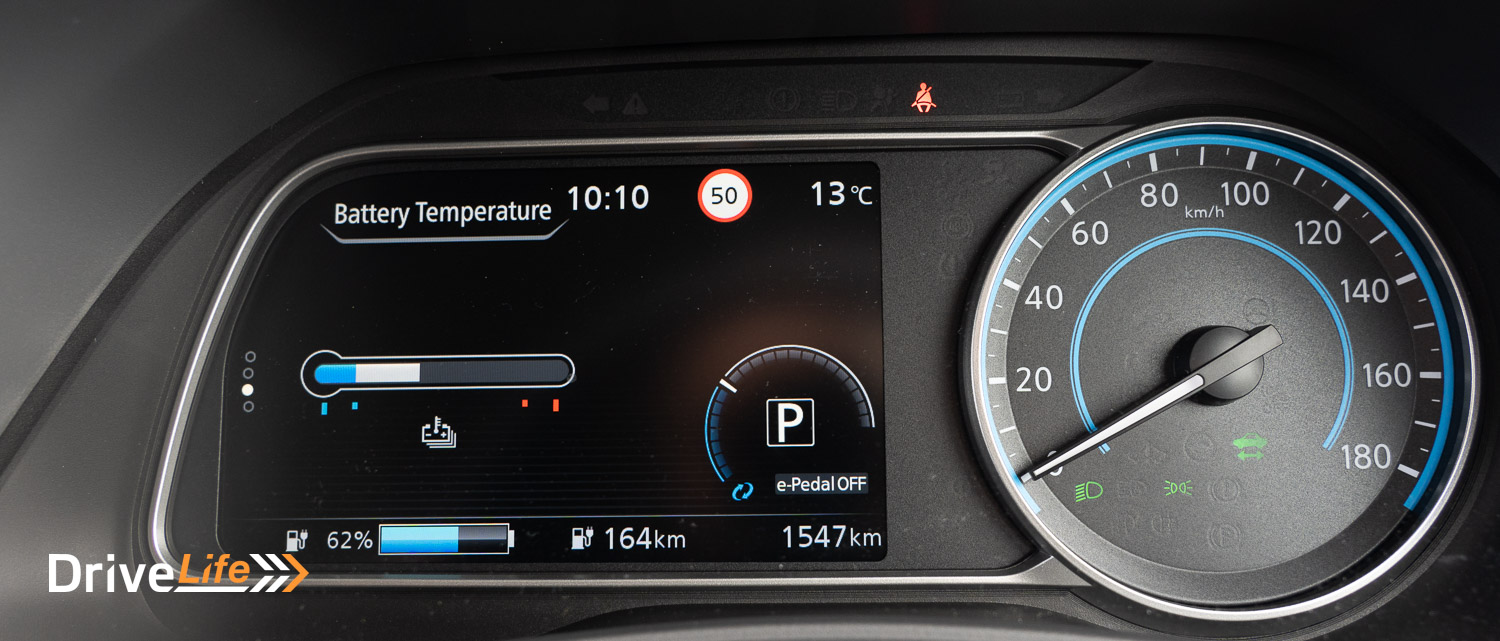
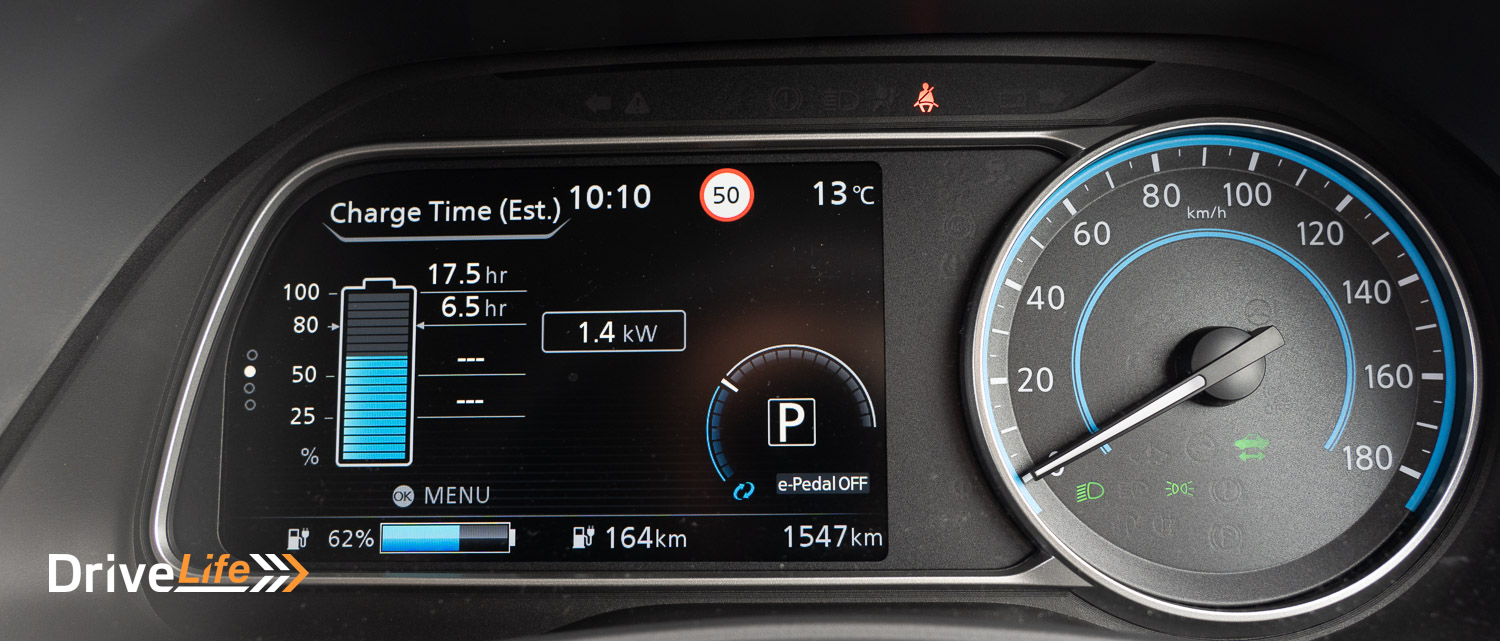
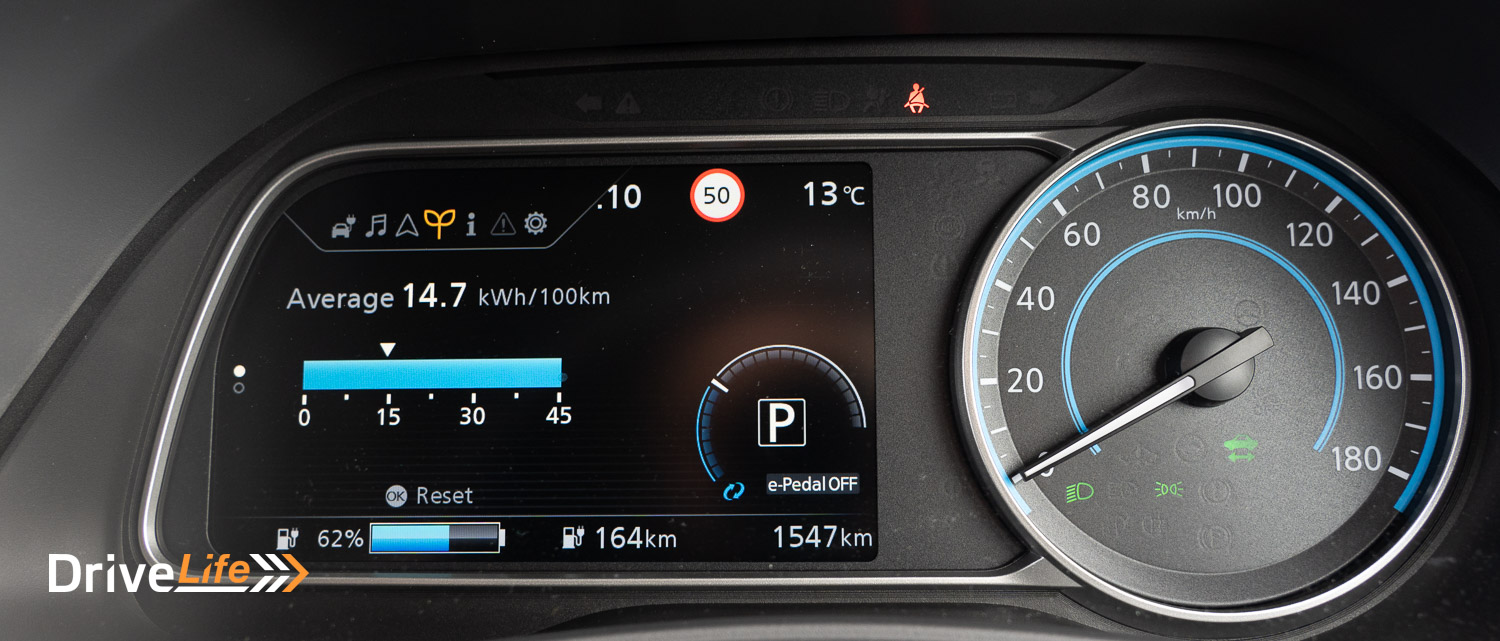
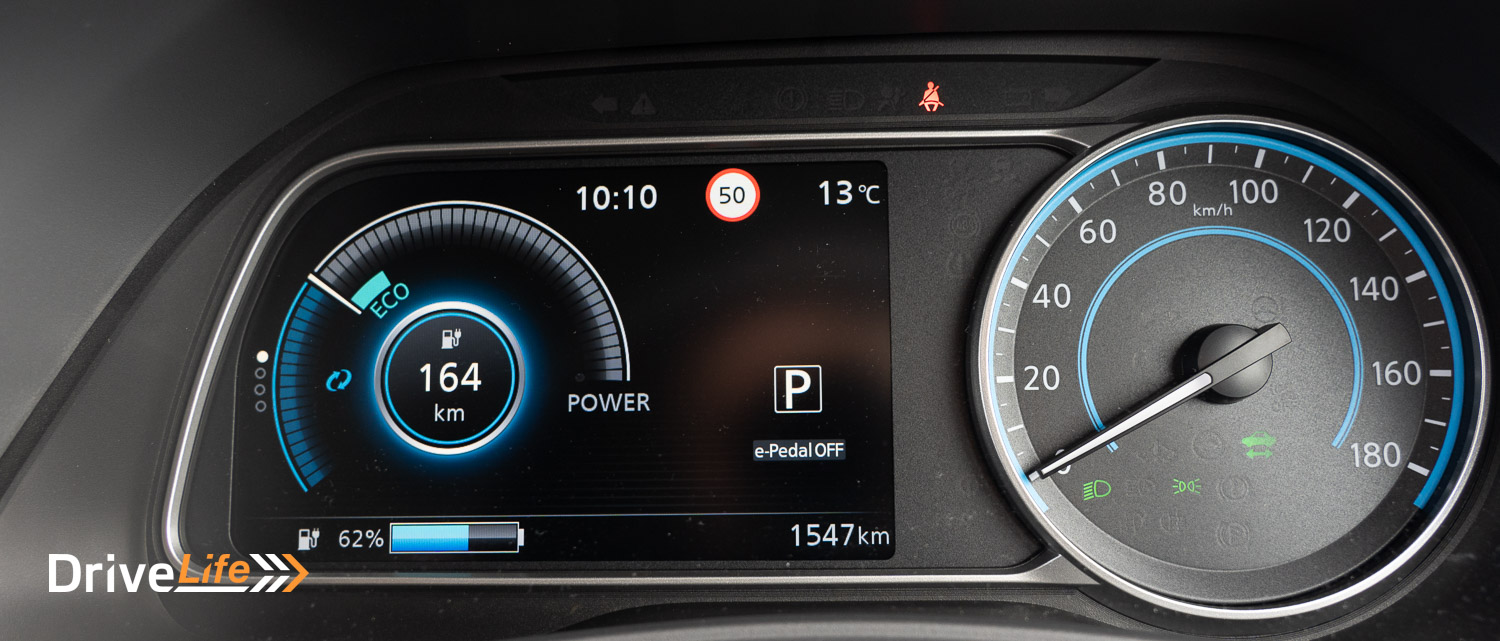
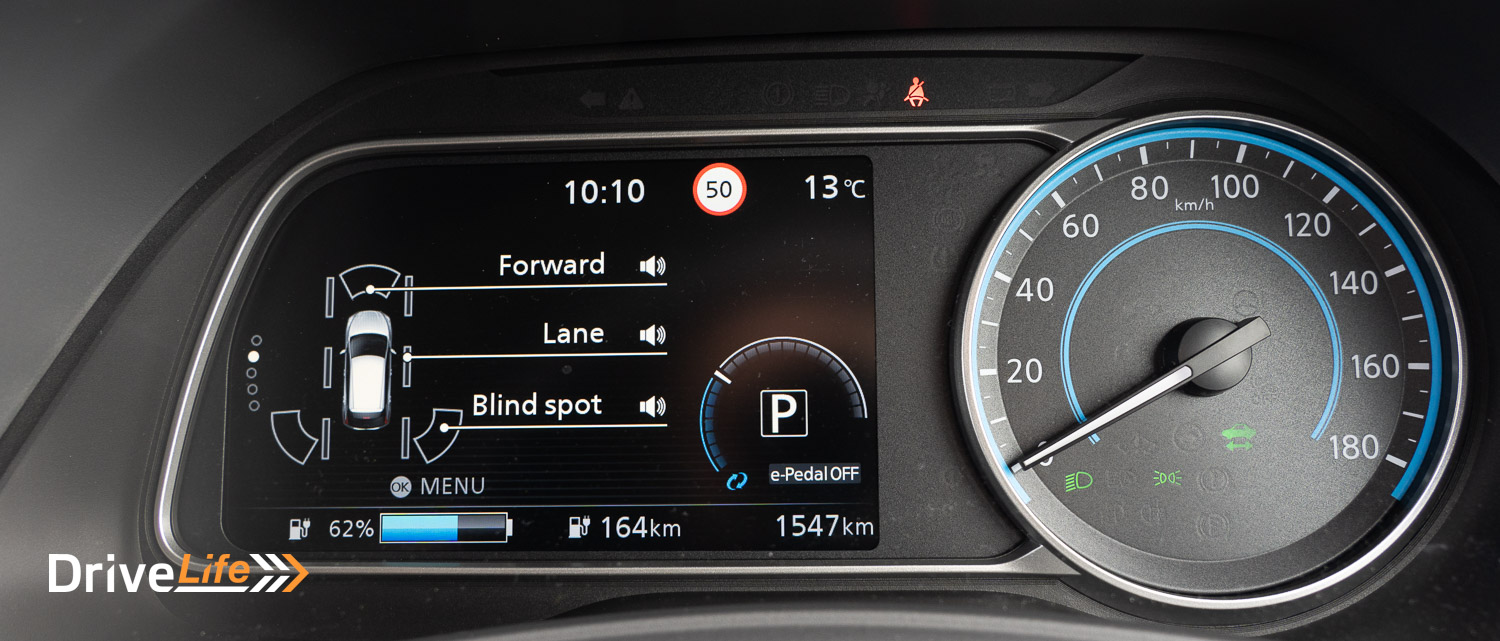
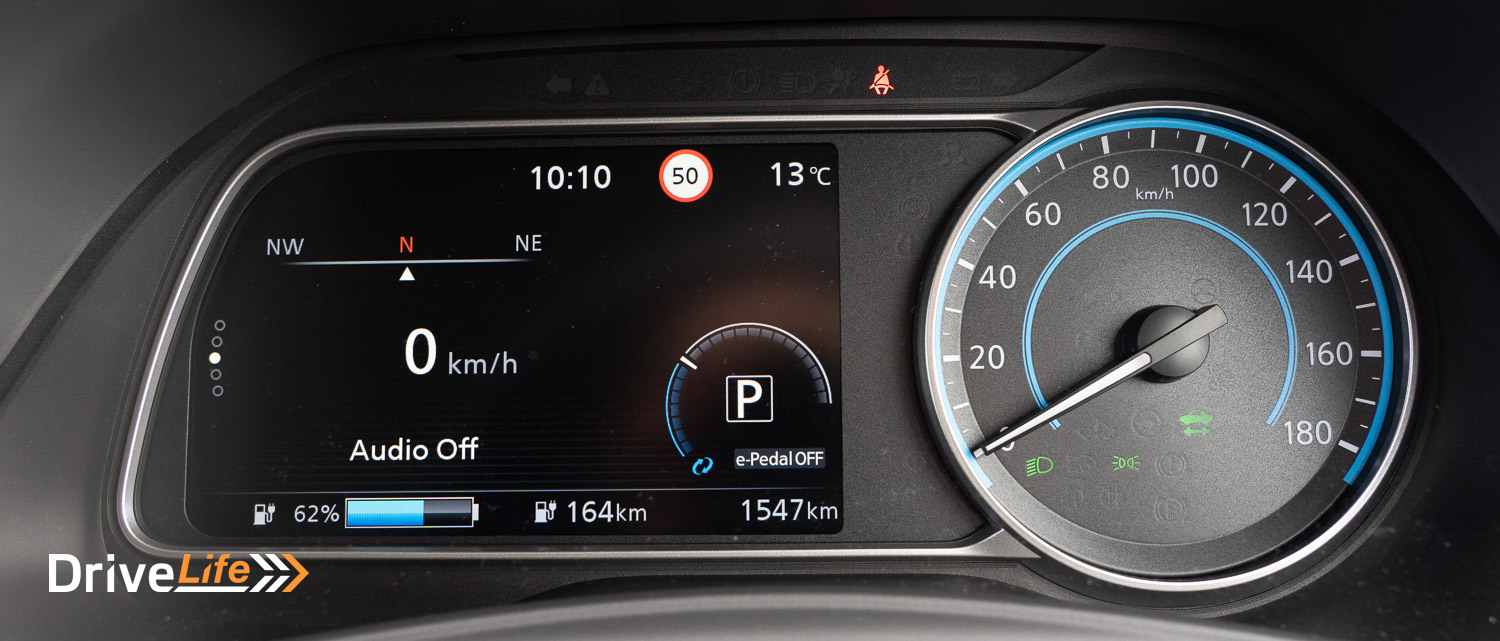
Speaking of brakes, it was surprising that the 2022 Nissan Leaf still has the same pedal park brake that my own car has. Using a pedal to put the parking brake on works just fine, but it feels a bit old-school since nearly (if not all) other EVs use an electric park brake.
The actual brake pedal feels a bit spongy at times, although there is plenty of braking power when needed. Another item that doesn’t feel great is the steering. It’s extremely light at most speeds, and while it does get a little heavier on the motorway, it’s pretty lifeless.
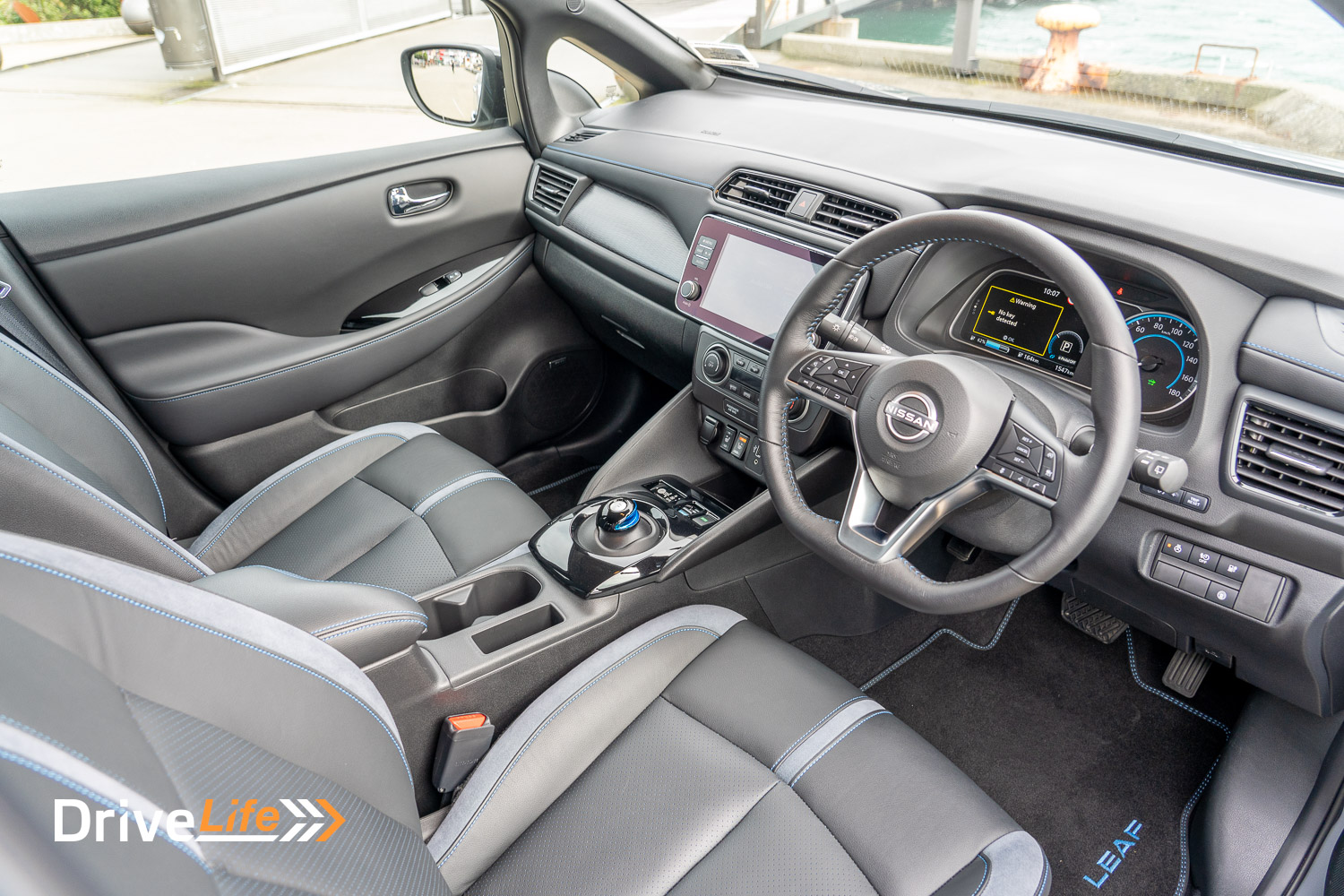
Around town and on the motorway, travel is mostly silent with good sound deadening to reduce the amount of tyre and road noise coming into the cabin. There’s just a hint of wind noise from the A-pillar when there’s no wind outside. Using the Leaf as a Daily Drive is a doddle. Visibility is mostly good, except for the almost-standard huge C pillar seen on most new cars. But there is blind spot monitoring to help keep you safe on those lane changes on the motorway. That visibility is aided by the height of the car, it can feel almost SUV-like when driving among other traffic. Not helping for a safer drive is the sun visor. It barely extends halfway down the door when you flip it sideways, and so can allow direct sunlight onto the driver at certain times.
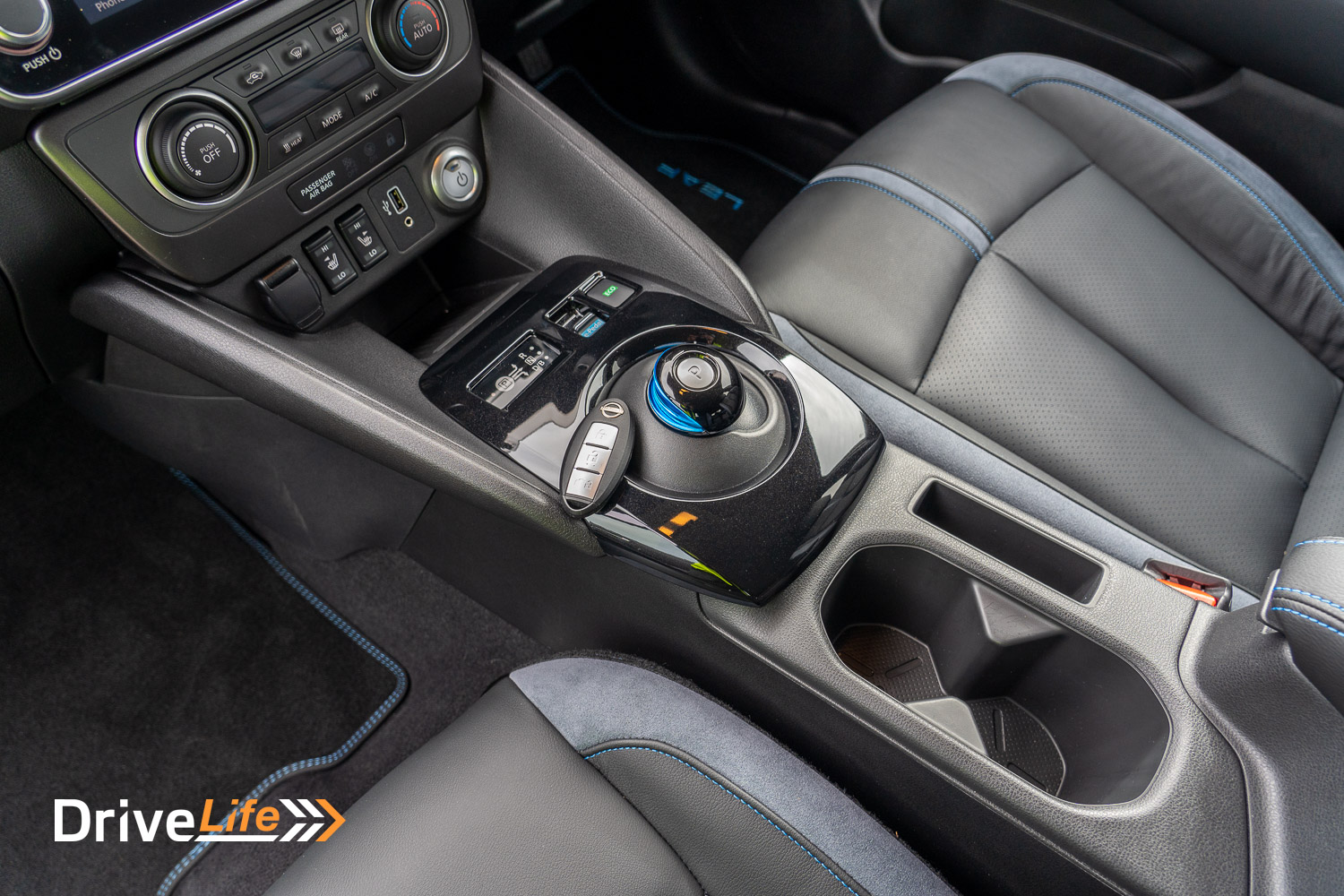
The Leaf has Traffic Sign Recognition (TSR) and it works quite well. We’ve had a run of cars with unreliable TSR, so it was nice that the Leaf was pretty much spot-on all the time.
As is usual with EVs, charging was all too easy with the Leaf. Get home, plug in, and walk away. On a full charge, the car indicated I could drive 271Km on a single charge, although I never got the chance to test this out fully. Over our 500Km of driving the Leaf in a week, for energy economy, it returned 16.1kWh/100Km. So with a 40kWh battery pack, this ends up at 242Km real-world driving range. In Wellington where we always see EVs using far more energy than stated, this is a good result.
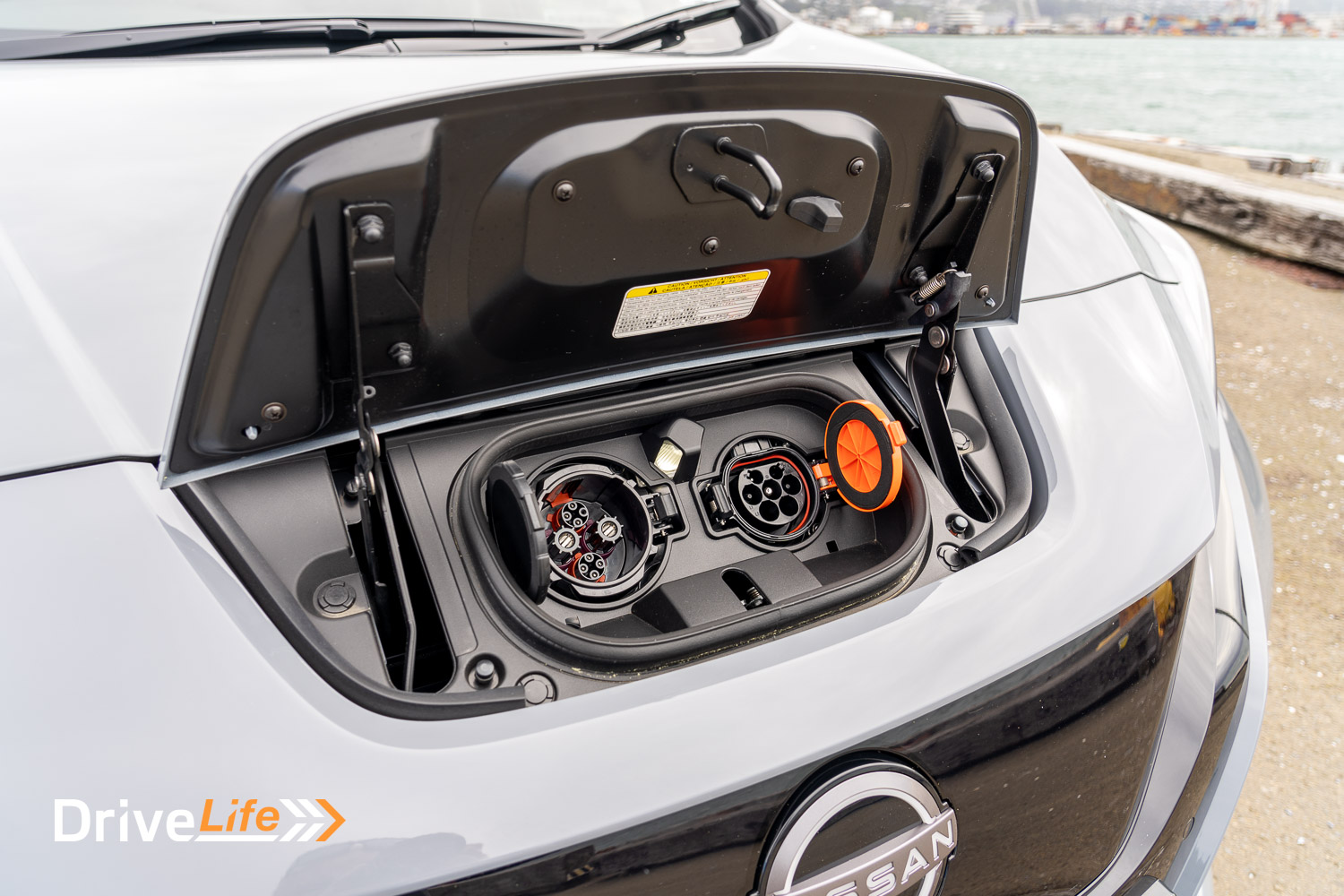
Compare that 16.1kWh/100Km to the 19.0 we got from the 2022 MG ZS EV and the Leaf wins, but it’s not as good as the 14.0 we got from the Hyundai Kona EV. At 16.1kWh/100Km, we actually beat Nissan’s suggested figure of 17.1.
While the Leaf has a heat pump for air conditioning, there’s no “driver-only” mode like we see in other EVs. While this might not save a huge amount of energy, it all helps.
For some reason, the indicators are now on the left side of the steering wheel, which messed with my mind after jumping out of my own Leaf with them on the right side.
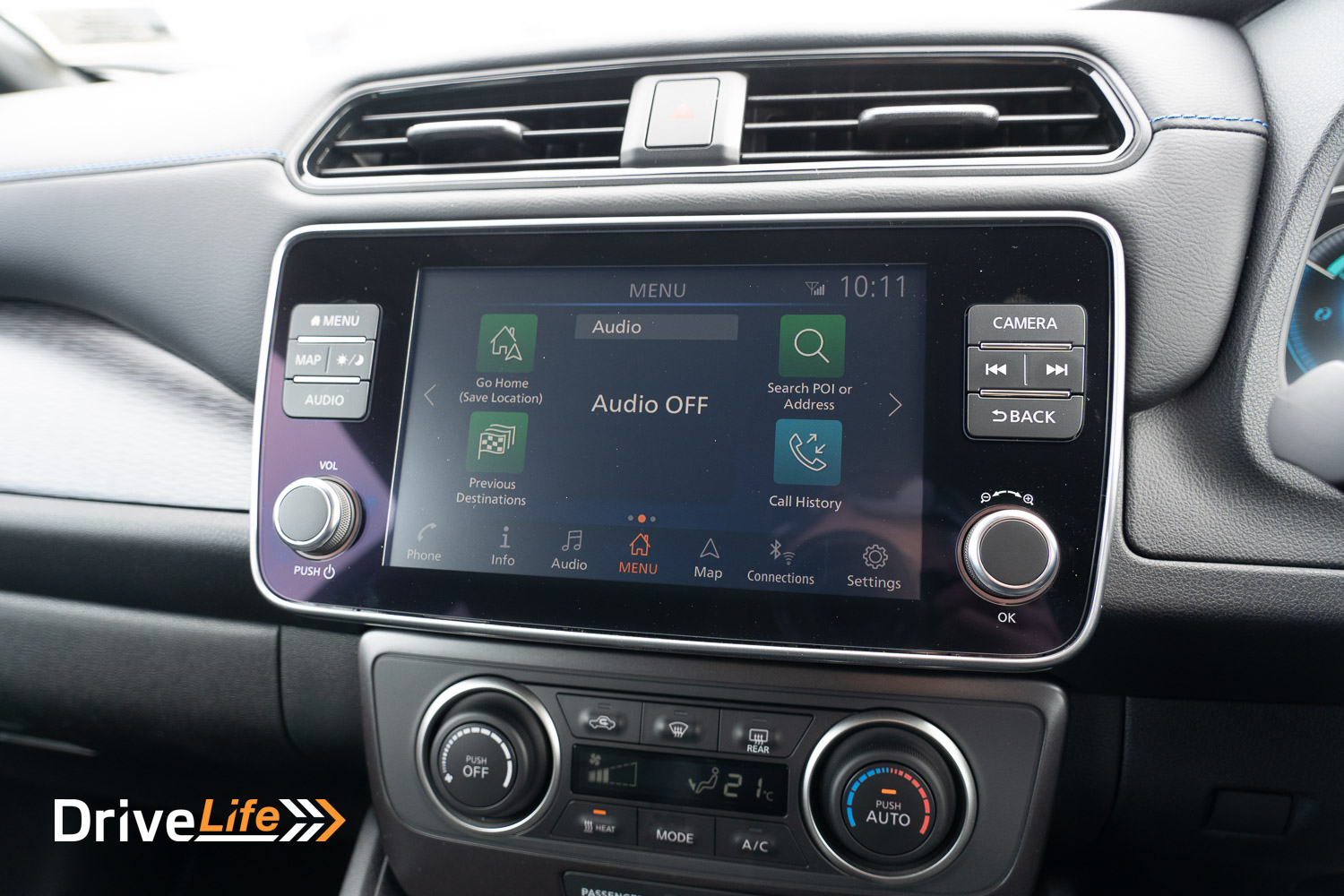
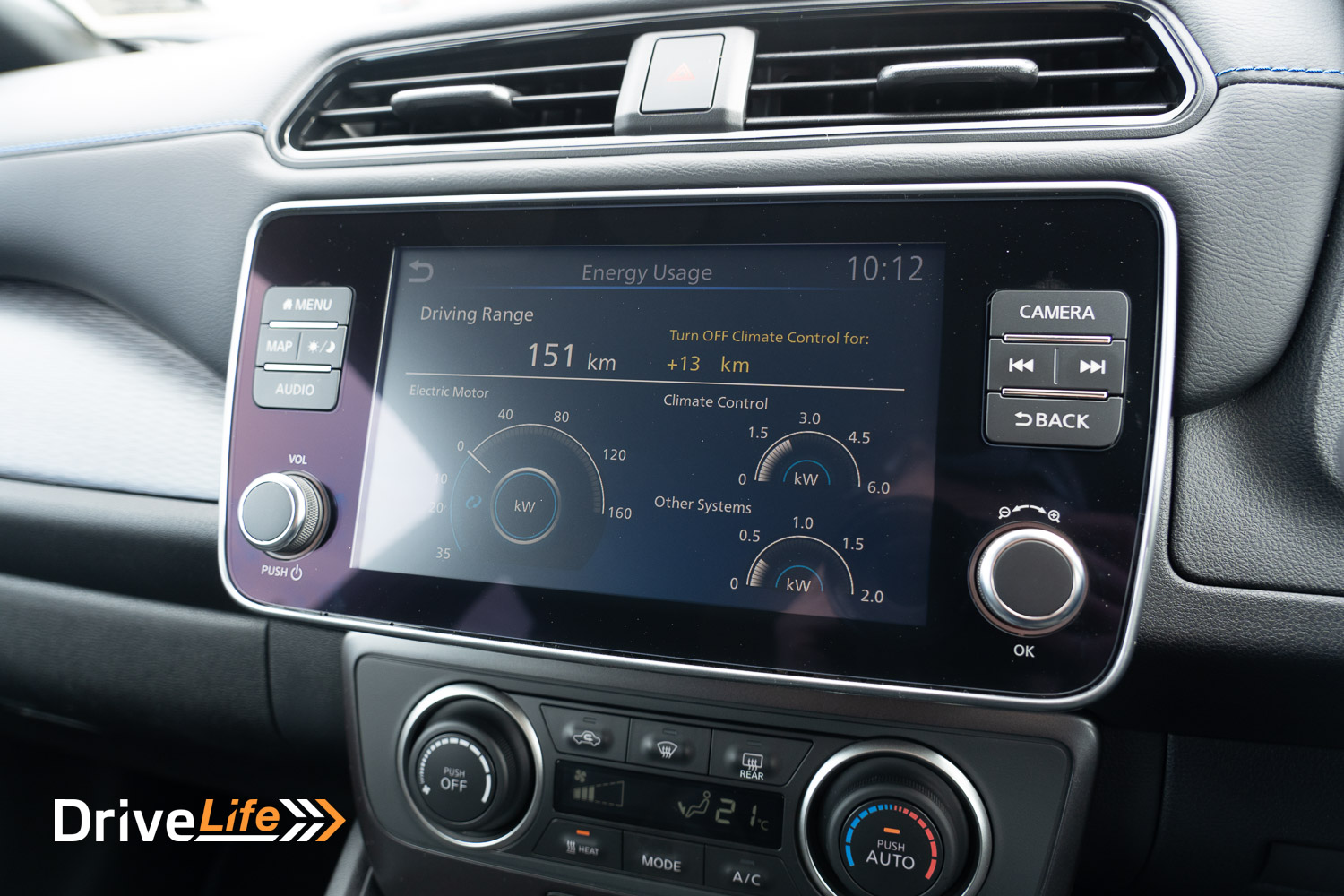
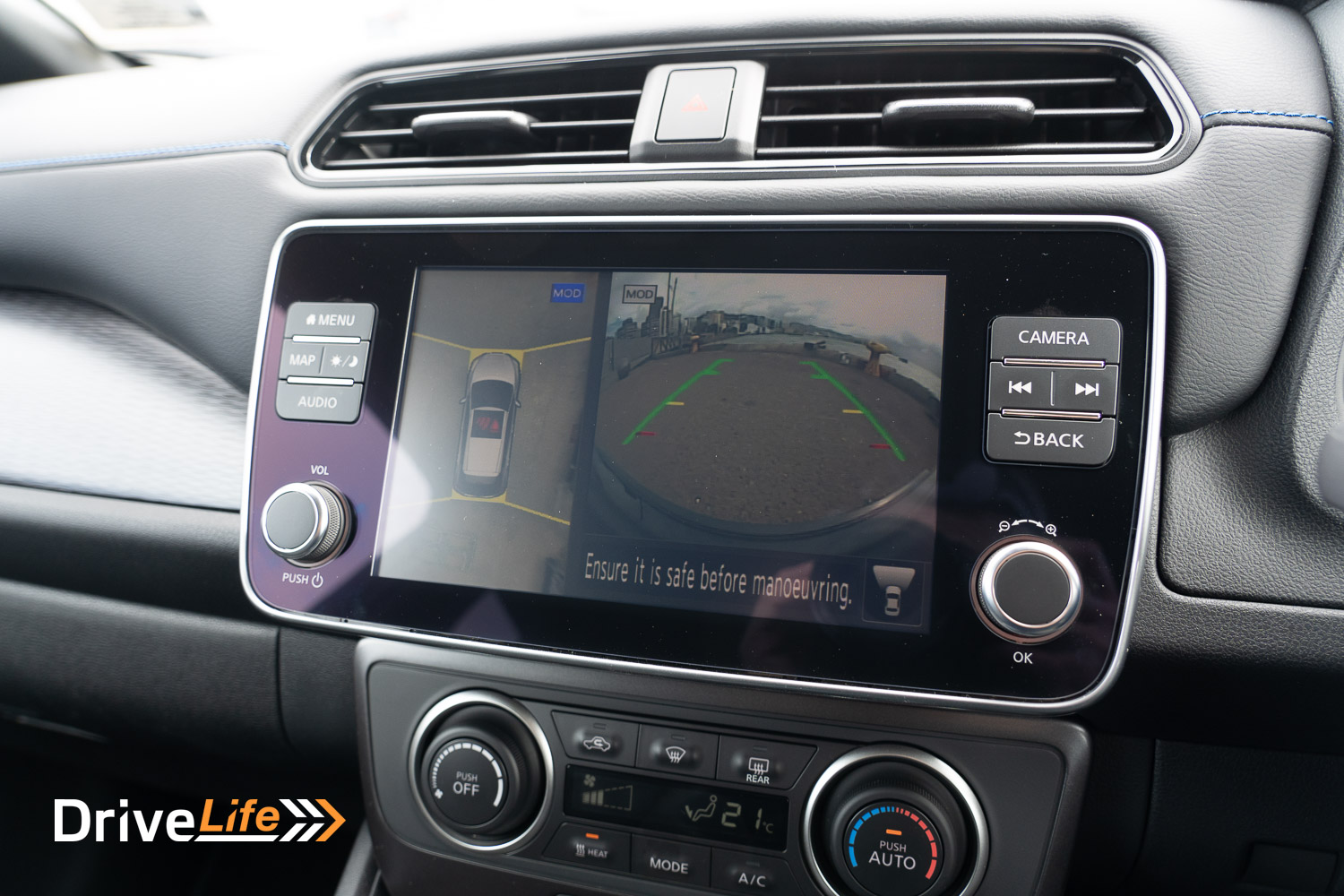
The infotainment system is a bit of a highlight; quick, simple and with reasonable resolution. It’s much better than the previous model. Up on the windscreen is the (standard) Intelligent Mirror. By flicking the switch under the mirror, it switches over to using a camera on the back of the car to project onto the mirror’s screen. This means instead of seeing just the rear headrests and the small back window, you have a full view right out the back of the car, and it’s wide-angle too. This is such a brilliant feature. We’ve seen the same system on the Landrover Defender so it was great to see this on a far lower-priced car.
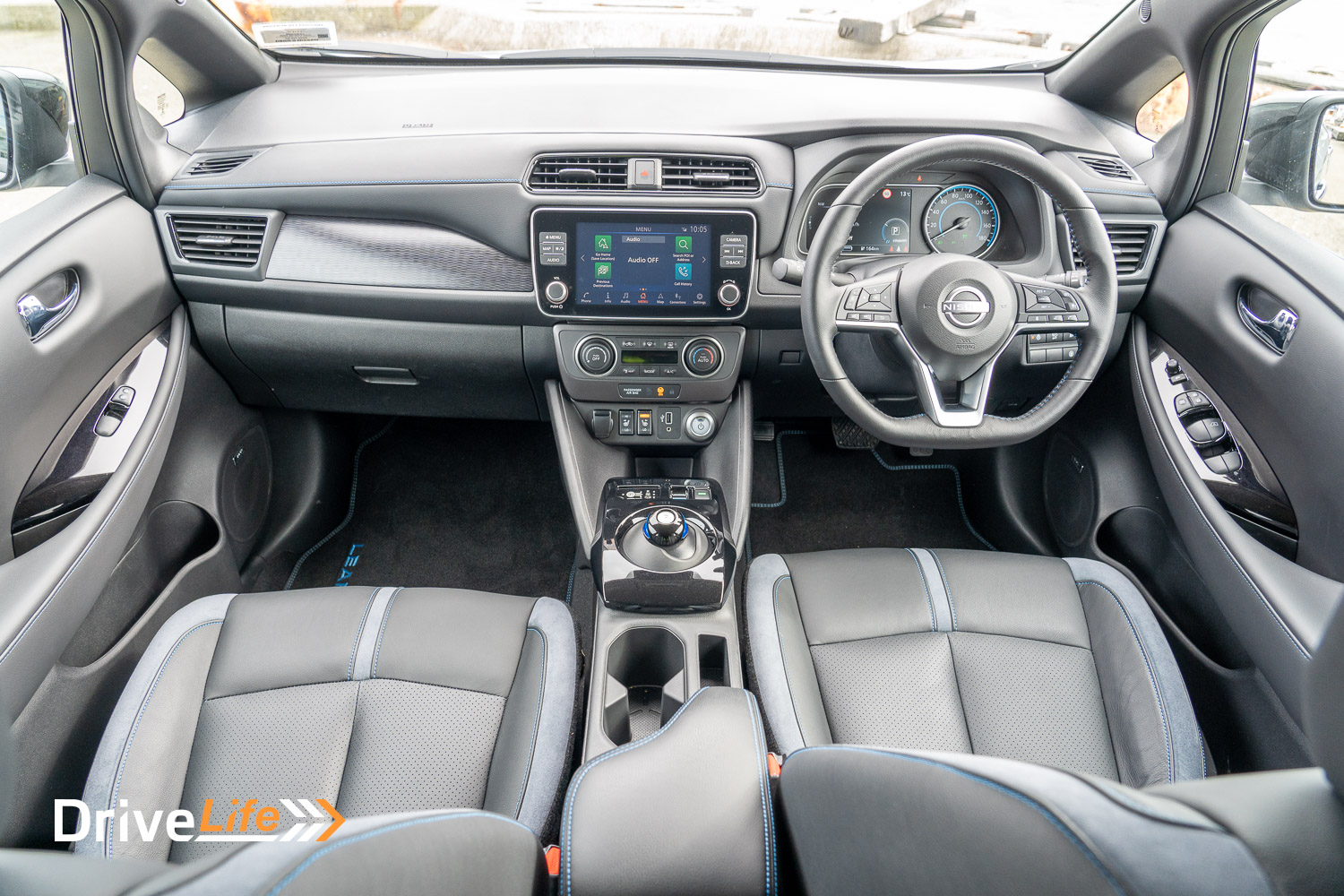
Like the previous generation, the charging port is at the front-middle of the car, now a much bigger opening panel. You can open it from the keyfob remote or from a switch on the right-hand side of the dash. We’ve had a few EVs lately where there is no light in the charging area (the 2022 MG ZS EV springs to mind) but the Leaf has two lights so you can see what you are plugging in where at night time. When fast charging, the latest Nissan Leaf still uses a “CHAdeMo” port, the same as the previous gen. According to Nissan, it will fast charge from 20% to 80% in “around 60 minutes”.
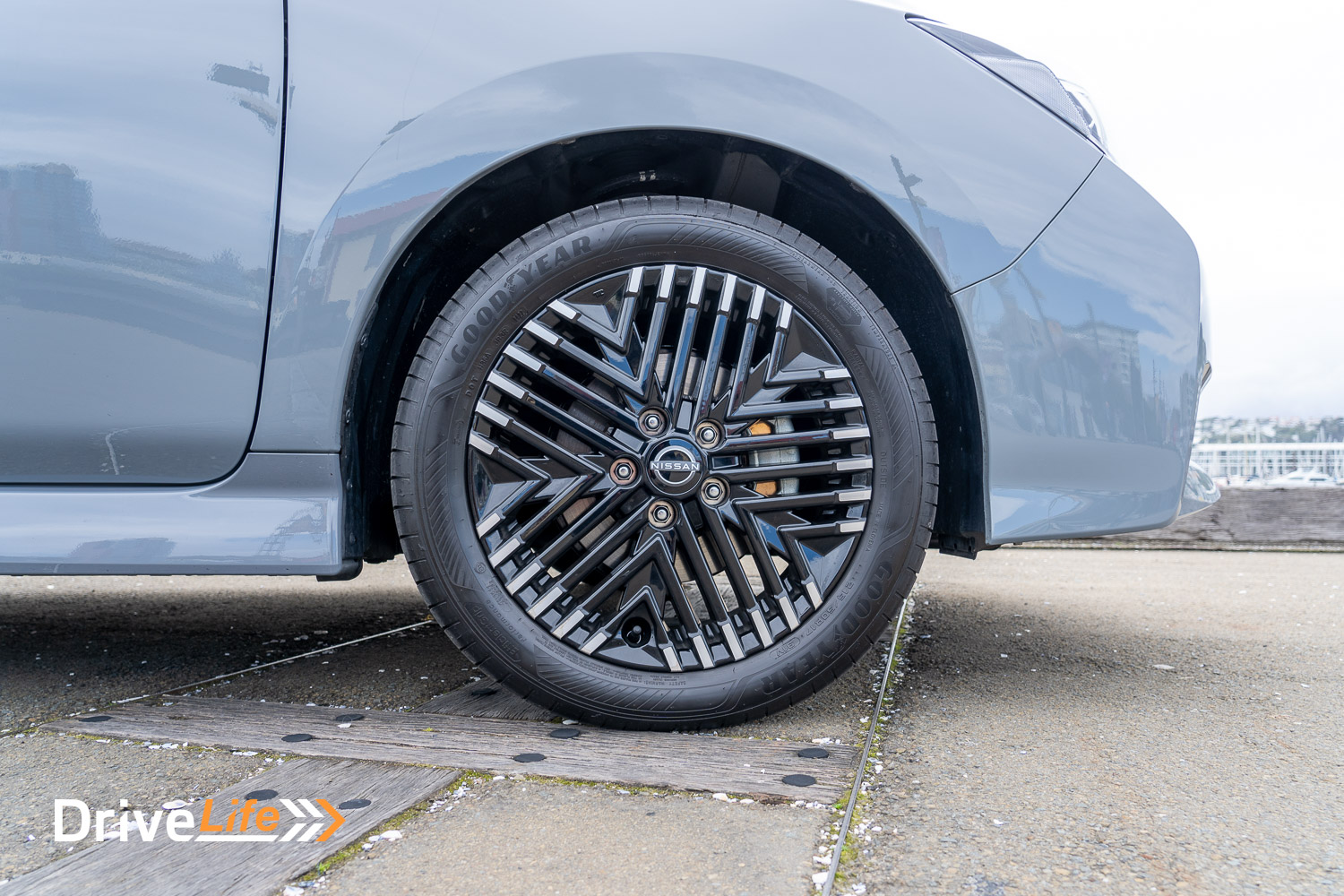
The earlier Leaf models didn’t have any cooling system for the battery pack, so they don’t like being fast charged over and over on the same day. We struck this with our Auckland-Wellington trip, when the batteries heated up considerably, reducing their ability to charge correctly. The new Leaf has the same issue. While there is some thermal battery management, it basically reduces the amount of (fast) charge going into the battery to help them stay cool. Something to keep in mind if you intend to do lots of fast charging in your new Leaf.
In regards to this, Nissan says:
Thermal management intervention is not required are normal use conditions. The results of design testing and simulation of pack heat generation during charging and discharging showed the battery capacity is attainable without adding any cooling structure.
Battery electrode material density has improved year on year the 40KWh was a 67% improvement on the 24KWh models. Charge capacity is 60% higher. Also, the volumetric efficiency has improved. In addition, the input/output characteristics and durability were also improved by enhancing cell performance (higher capacity, lower resistance (<50%) and new layered structure).
The maximum current flowing in the battery has increased and the accuracy of the current sensor has been improved.
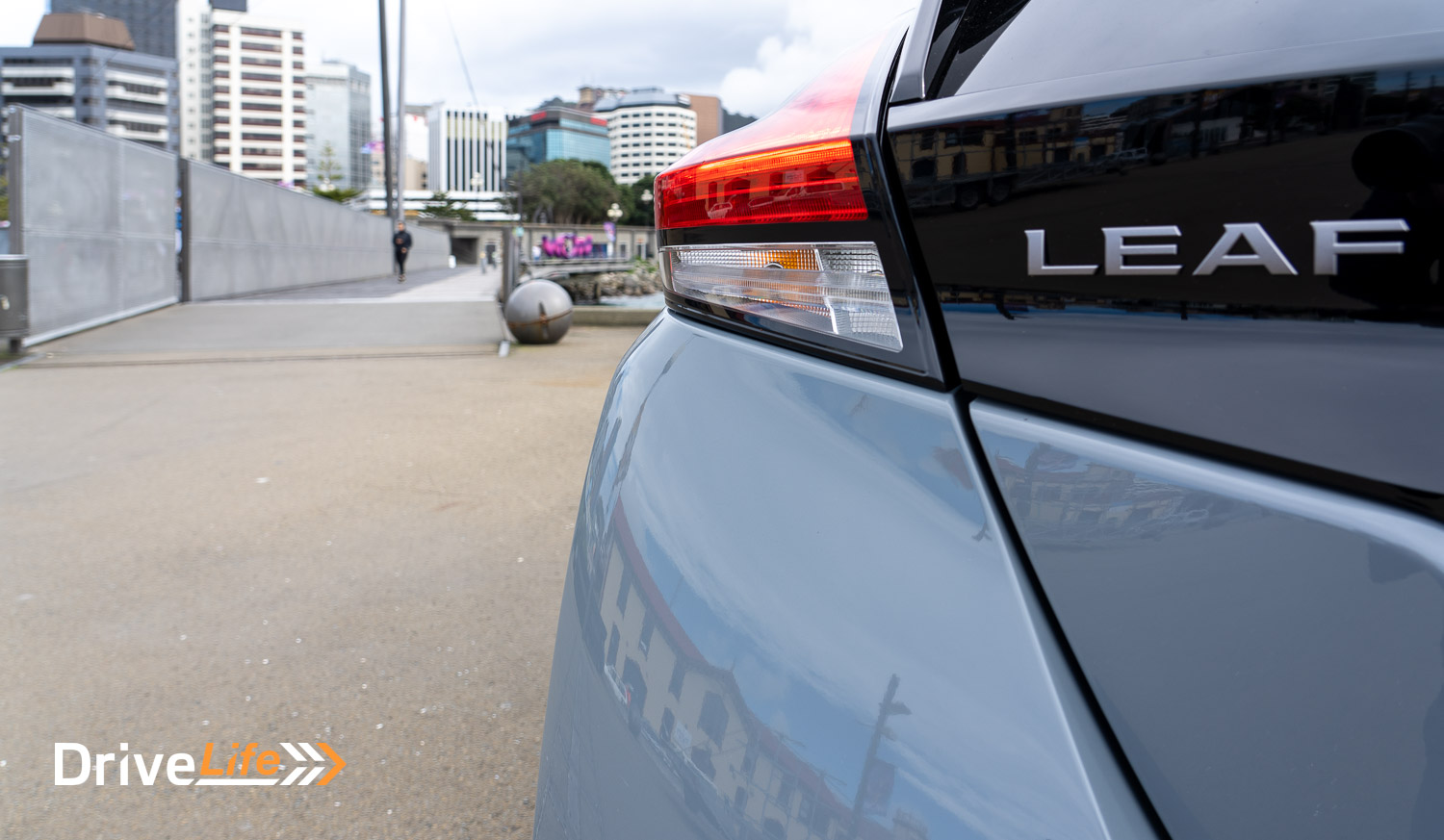
2022 Nissan Leaf 40kW – Specifications
| Vehicle Type | 5-door, small-medium front-wheel-drive hatchback EV |
| Starting Price | $63,990 |
| Price as Tested | $63,990 |
| Engine | Single electric motor |
| Power, Torque kW/Nm | 110/320 |
| Transmission | – |
| Spare Wheel | Pump only |
| Kerb Weight, Kg | 1,594 |
| Length x Width x Height mm | 4490x1788x1540 |
| Boot Space / Cargo Capacity, Litres (seats up/seats down) | 405/1,176 |
| Battery Capacity, kWh | 40 (39 usable) |
| Energy Economy,kWh/100km | Advertised Spec – Combined – 17.1 Real-World Test – Combined – 16.1 Low Usage: 6-10 / Medium Usage 11-19 / High Usage 19+ |
| Towing Capacity Kg, unbraked/braked | NA |
| Turning circle, metres | 11 Small: 6-10m / Medium 10-12m / Large 12m+ |
| Warranty | 5 Years Roadside Assist 5 Years, 150,000Km Warranty 8 Years, 160,000Km Battery Warranty |
| Safety information | ANCAP Rating – 5 stars – Link Rightcar.govt.nz – 5 Stars – PHG801 |
Have you enjoyed this review? Be sure to join our monthly email newsletter list so you don’t miss a single car review!


